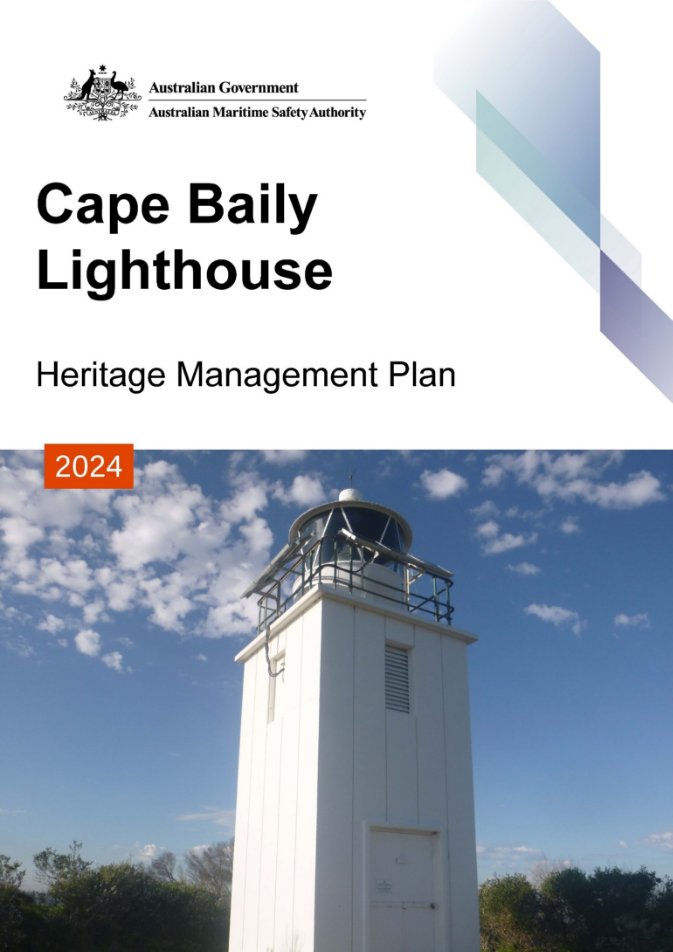Table of contents
Executive Summary
- Introduction
- Background and purpose
- Heritage management plan objectives
- Methodology
- Status
- Authorship
- Acknowledgements
- Language
- Previous reports
- Sources of information and images
2. Cape Baily Lighthouse site
2.1 Location
2.2 Setting and landscape
2.3 Lease
2.4 Access
2.5 Listings
3. History
3.1 General history of lighthouses in Australia
3.2 The Commonwealth Lighthouse Service
3.3 Cape Baily: a history
3.4 Why Cape Baily?
3.5 Building a lighthouse
3.6 Chronology of major events
3.7 Changes and conservation over time
3.8 Summary of current and former uses
3.9 Summary of past and present community associations
3.10 Unresolved questions or historical conflicts
3.11 Recommendations for further research
4. Fabric
4.1 Fabric register
4.2 Related object and associated AMSA artefact
4.3 Comparative analysis
5. Heritage significance
5.1 Commonwealth heritage listing – Cape Baily Lighthouse
5.2 Condition and integrity of Commonwealth heritage values
5.3 Gain or loss of Commonwealth heritage values
6. Opportunities and constraints
6.1 Implications arising from significance
6.2 Framework: sensitivity to change
6.3 Statutory and legislative requirements
6.4 Operational requirements and occupier needs
6.5 Proposals for change
6.6 Potential pressures
6.7 Processes for decision-making
7. Conservation management principles and policies
8. Policy implementation plan
8.1 Plan and schedule
8.2 Monitoring and reporting
Appendix 1. Glossary of heritage conservation terms
Appendix 2. Glossary of historic lighthouse terms relevant to Cape Baily Lighthouse
Appendix 3. Table demonstrating compliance with the EPBC Regulations
Appendix 4. Cape Baily current light details
Endnotes
Reference list
List of Figures
Figure 1. Cover photo of Cape Baily Lighthouse (© AMSA, 2018)
Figure 2. Planning process applied for heritage management (Source: Australia ICOMOS, 1999)
Figure 3. Location of Cape Baily Lighthouse along Australia's eastern coast (Imagery ©2022 NASA, TerraMetrics. Map data: @2022 Google)
Figure 4. Location of Cape Baily Lighthouse within the national park (Imagery ©2022 CNES/Airbus, Landsat/Copernicus, Maxar Technologies, Sinclair Knight Merz. Map Data: @2022 Google)
Figure 5. Cliffs by Cape Baily track (© AMSA, 2018)
Figure 6. Vegetation by Cape Baily Lighthouse (© AMSA, 2018)
Figure 7. Cape Baily Lighthouse AMSA lease map (Google Earth Imagery ©2017 Google, ESRI World Streetmap)
Figure 8. Pedestrian walking track to lighthouse (© AMSA, 2018)
Figure 9. Incandescent oil vapour lamp by Chance Brothers (Source: AMSA)
Figure 10. Dioptric lens on display at Narooma (Source: AMSA)
Figure 11. Dalén's system - sunvalve, mixer and flasher (Source: AMSA)
Figure 12. Design chosen for Cape Baily Lighthouse. Courtesy of the National Archives of Australia. NAA: SP155/1, MISC21994L (© Commonwealth of Australia, National Archives of Australia)
Figure 13. Cape Baily Lighthouse under construction, 1950 (Courtesy of the Local Studies Collection, Sutherland Shire Libraries)
Figure 14. Cape Baily Lighthouse under construction, 1950 (Courtesy of the Local Studies Collection,
Sutherland Shire Libraries)
Figure 15. Cape Baily Lighthouse under construction, 1950 (Courtesy of the Local Studies Collection, Sutherland Shire Libraries)
Figure 16. Visitors to Cape Baily Lighthouse, 1950 (Courtesy of the Local Studies Collection, Sutherland Shire Libraries)
Figure 17. Stokes Point Lighthouse (© AMSA, 2017)
Figure 18. Cape Liptrap Lighthouse (© AMSA, 2013)
Acronym List
List of acronyms utilised throughout this heritage management plan:
Acronym | Definition |
AGA | Gas Accumulator Company |
AMSA | Australian Maritime Safety Authority |
AMSG | Australian Maritime Systems Group |
AtoN | Aid to Navigation |
BBT | Barbier, Benard, et Turenne |
CHL | Commonwealth Heritage List |
DCCEEW | Department of Climate Change, Energy, the Environment and Water |
EPBC Act | Environment Protection and Biodiversity Conservation Act 1999 (Cth) |
EPBC Regulations | Environment Protection and Biodiversity Conservation Regulations 2000 (Cth) |
HMP | Heritage Management Plan |
IALA | International Association of Marine Aids to Navigation and Lighthouse Authorities |
LED | Light emitting diode |
NAA | National Archives of Australia |
NES | National Environmental Significance |
NLA | National Library of Australia |
RMS | Record Management System |
RNE | Register for the National Estate (non-statutory archive) |
Executive summary
Built in 1950, Cape Baily Lighthouse was fully-functional by 21 December of the same year. The lighthouse was constructed to aid vessels entering and leaving Botany Bay south of Sydney (New South Wales).
Cape Baily Lighthouse is notable for its heritage significance and was placed on the Commonwealth Heritage List in 2004. As included within its listing, the lighthouse is recognised for its association with the ongoing development of aids to navigation during the mid-20th century post-war period. The lighthouse is also notable for its aesthetic value sitting atop the headland with no modern intrusions.
Situated on Cape Baily within the Kamay Botany National Park, the lighthouse stands approximately 17.5km south of Sydney. As a working marine aid to navigation (AtoN), the lighthouse tower is operated and managed by the Australian Maritime Safety Authority (AMSA).
The lighthouse houses a Chance Brothers & Co. 375mm focal radius fixed (non-rotating) lens which is still in service today. The light runs on an automated mechanism as part of AMSA’s network of AtoN. The equipment is serviced by AMSA’s maintenance contractor who visits as least once per year. AMSA officers visit on an ad hoc basis for auditing, project and community liaison purposes.
AMSA lease the site from the NSW National Parks and Wildlife Authority (NSW NPWS).
This heritage management plan is concerned mainly with the lighthouse, however it also addresses the management of the surrounding land. The plan is intended to guide AMSA’s decisions and actions. AMSA has prepared this plan to integrate the heritage values of the lighthouse in accordance with the Environment Protection and Biodiversity Conservation Act 1999 (Cth), and the Environment Protection and Biodiversity Conservation Regulations 2000 (Cth).
Being well built and generally well maintained, the lighthouse is in relatively good, stable condition. The policies and management guidelines set out in this heritage management plan strive to ensure that the Commonwealth heritage values of Cape Baily Lighthouse are recognised, maintained, and preserved for future generations.

- Introduction
1.1 Background and purpose
The Australian Maritime Safety Authority (AMSA) is the Commonwealth agency responsible for coastal aids to navigation. AMSA’s network includes Cape Baily Lighthouse, built and first lit in 1950.
Section 341S of the Environment Protection and Biodiversity Conservation Act 1999 (Cth) (EPBC Act) requires AMSA to prepare a management plan for Cape Baily Lighthouse that addresses the matters prescribed in Schedules 7A and 7B of the Environment Protection and Biodiversity Conservation Regulations 2000 (Cth) (EPBC Regulations). The principal features of this management plan are:
- a description of the place, its heritage values, their condition and the method used to assess its significance
- an administrative management framework
- a description of any proposals for change
- an array of conservation policies that protect and manage the place
- an implementation plan
- ways the policies will be monitored and how the management plan will be reviewed.
AMSA has prepared this heritage management plan to guide the future conservation of the place. This plan provides the framework and basis for the conservation and best practice management of Cape Baily Lighthouse in recognition of its heritage values. The policies in this plan indicate the objectives for identification, protection, conservation and presentation of the commonwealth heritage values of the place. Figure 2 shows the basic planning process applied.

Figure 2. Planning process applied for heritage management (Source: Australia ICOMOS, 1999)
1.2 Heritage management plan objectives
The objectives of this heritage management plan are to:
- protect, conserve and manage the Commonwealth heritage values of Cape Baily Lighthouse.
- interpret and promote the Commonwealth heritage values of Cape Baily Lighthouse.
- manage use of the lighthouse
- use best practice standards, including ongoing technical and community input, and apply best available knowledge and expertise when considering actions likely to have a substantial impact on Commonwealth heritage values.
In undertaking these objectives, this plan aims to:
- provide for the protection and conservation of the heritage values of the place while minimising any impacts on the environment by applying the relevant environmental management requirements in a manner consistent with Commonwealth heritage management principles.
- take into account the significance of the region as a cultural landscape occupied by Aboriginal people over many thousands of years.
- recognise that the site has been occupied by lease holders since the early 20th century.
- encourage site use that is compatible with the historical fabric, infrastructure and general environment.
- record and document maintenance works, and changes to the fabric in Cape Baily Lighthouse fabric register (see Section 4. Fabric Register).
The organisational planning cycle and associated budgeting process is used to confirm requirements, allocate funding and manage delivery of maintenance activities. Detailed planning for the AtoN network is managed through our internal planning processes.
An interactive map showing many of AMSA’s heritage sites, including Cape Baily Lighthouse, can be found at AMSA Heritage Lighthouses Interactive MapP0FP0F[i]PP https://www.operations.amsa.gov.au/lighthouses/?_ga=2.236400321.1108408984.1535497123-1996646104.1535497123
1.3 Methodology
The methodology used in the preparation of this plan is consistent with the recommendations of The Burra Charter and with the requirements of Chapter 5, Part 15 Division 1A of the EPBC Act. In particular, the plan:
- provides a history of the site based on information sourced from archival research, expert knowledge, and documentary resources.
- provides a description of the site based on information sourced from site inspection reports and fabric registers.
- details the Commonwealth heritage criteria satisfied by Cape Baily Lighthouse as set out by schedule 7A of the EPBC Regulations.
The criterion set out at Schedule 7A (h) (i-xiii) informed the development of the required policies for the management of the Cape Baily Lighthouse, in conjunction with input from the Department of Climate Change, Energy, the Environment and Water on best practice management.
Consultation
In preparation of the plan, AMSA sought engagement with New South Wales National Parks and Wildlife Service (NSW NPWS). NSW NPWS provided information on the management of the surrounding environment including AMSA’s leased area, and site access information.
AMSA also sought engagement with the La Perouse Local Aboriginal Land Council in September 2021 under direction from NSW NPWS. AMSA is yet to receive a response and future versions of this plan will provide an update on this consultation process.
The draft management plan was advertised in accordance with the EPBC Act and EPBC Regulations. On 7 October 2022 a notice was placed in The Australian newspaper publication which invited the general public to review the draft plan on AMSA’s website and provide feedback. Public consultation closed on 4 November 2022. There were no submissions.
A developed draft was submitted to the Minister for the Environment through the Department of Climate Change, Energy, the Environment and Water and in that process the Minister’s delegate sought advice from the Australian Heritage Council. It was determined that this heritage management plan is not inconsistent with requirements of the EPBC Act and Regulations.
No updates or amendments have been made in this version of the plan. Future updates and amendments will be listed here.
1.4 Status
This plan has been adopted by AMSA in accordance with Schedule 7A (Management plans for Commonwealth Heritage places) and Schedule 7B (Commonwealth Heritage management principles) of the EPBC Regulations to guide the management of the place and for inclusion in the Federal Register of Legislative Instruments.
1.5 Authorship
This plan has been prepared by AMSA. At the initial time of publication, the Australian Maritime Systems Group (AMSG) is the contract maintenance provider for the Commonwealth Government’s AtoN network including Cape Baily Lighthouse.
1.6 Acknowledgements
AMSA acknowledges the professional assistance of NSW NPWS on this heritage management plan.
1.7 Language
For clarity and consistency, some words in this plan such as restoration, reconstruction and preservation, are used with the meanings defined in the Burra Charter[ii]. (See Appendix 1 Glossary of heritage conservation terms). Also see ‘Appendix 2 Glossary of lighthouse terminology relevant to Cape Baily which sets out the technical terminology used in this plan.
1.8 Previous reports
- A Supplementary Information report on Cape Baily by Graham Brooks & Associates was produced for NSWNPWS in November 2001.[iii]
- Peter Marquis-Kyle prepared a Heritage Lighthouse Report for AMSA in 2007.[iv]
- A Heritage Asset Condition Report (4th Revision) was prepared by AMSG in 2022 for AMSA.[v]
1.9 Sources of information and images
This plan has used a number of sources of information. This includes the National Archives of Australia (NAA), the National Library of Australia (NLA) and AMSA’s heritage collection.

2. Cape Baily Lighthouse site
2.1 Location
Cape Baily Lighthouse is located approximately 17.5 kilometres south of the Sydney Central Business District. The lighthouse is situated within Kamay Botany Bay National Park’s Kurnell area. Lighthouse coordinates: 34º 2.2000'S, 151º 13.3000'E

Figure 3. Location of Cape Baily Lighthouse along Australia's eastern coast (Imagery ©2022 NASA, TerraMetrics. Map data: ©2022 Google

Figure 4. Location of Cape Baily Lighthouse within the national park (Imagery ©2022 CNES/Airbus, Landsat/Copernicus, Maxar Technologies, Sinclair Knight Merz. Map data: ©2022 Google)
2.2 Setting and landscape
Cape Baily Lighthouse is located on Kurnell Peninsula. The peninsula is dominated by heavy industrial plants including oil refineries and a large sewerage treatment plant. The coastline to the north and south is dominated by coastal cliffs.
The lighthouse is the only structure in its immediate location.
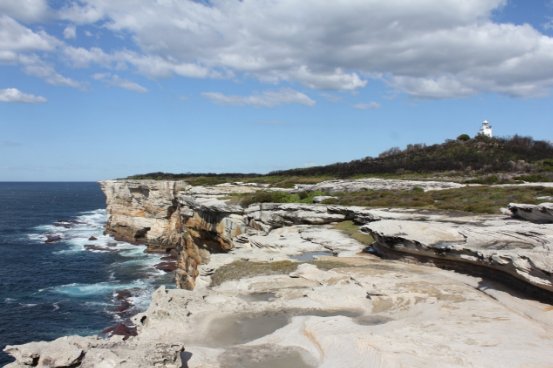
Figure 5. Cliffs by Cape Baily track (© AMSA, 2018)
Fauna and flora
The lighthouse is located in a fragile ecosystem within the Kamay Botany National Park. At the time this plan was written, the Park contained seven threatened plants specimens and eighteen threatened animals. The landscape is dominated by heath vegetation and sand dunes. The Eastern Suburbs Banksia Scrub Endangered Ecological Community is also recorded within the Park.
In 2020, the ‘Kamay Botany Bay National Park Plan of Management’ was released by the New South Wales State Government and can be accessed online: http://www.environment.nsw.gov.au/resources/planmanagement/final/botany-bay-national-park-plan-management-1600376.pdf

Figure 6. Vegetation by Cape Baily Lighthouse (© AMSA, 2018)
2.3 Lease
AMSA lease the Cape Baily Lighthouse and land from the NSW National Parks and Wildlife Service, the state body responsible for Kamay Botany Bay National Park.
The AMSA lease consists of a 930m2 parcel of land, which sits wholly within the Kamay Botany Bay National Park.
The current lease was recently renewed and has an end date of 30 June 2047. The lease provides a framework within which access rights are subject to negotiations between AMSA and NSW NPWS due to the fragility and erodibility of the site.
AMSA must comply with the Kamay Botany Bay National Park Plan of Management.[vi]
 Figure 7. Cape Baily Lighthouse AMSA lease map (Google Earth Imagery ©2017 Google, ESRI World Streetmap)
Figure 7. Cape Baily Lighthouse AMSA lease map (Google Earth Imagery ©2017 Google, ESRI World Streetmap)
2.4 Access
A vehicle access track exists from the Cronulla View carpark at Doughboy Head, it is approximately 1.4km each way. The access track is often overgrown with vegetation and is difficult to traverse in places.
The track is only accessible to service vehicles. All public access is by walking trails only. The last few hundred meters are required to be walked by all visitors.
Due to small internal accessways and the installation of critical navigational equipment, access inside the lighthouse tower is restricted to authorised personnel and AMSA employees and contractors.
The site is visited by AMSA maintenance contractors every 12 months. Dependent upon works to be undertaken and track conditions a decision is made to either drive or walk.
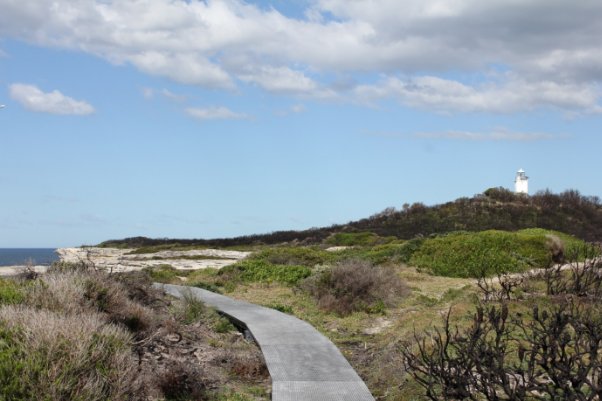
Figure 8. Pedestrian walking track to lighthouse (© AMSA, 2018)
2.5 Listings
Cape Baily Lighthouse is listed on the following heritage registers:
List | ID |
Commonwealth Heritage List | 105571[vii] |
Register of the National Estate (non-statutory) | 102930[viii] |
The Kurnell Peninsula Headland, on which the Cape Baily lighthouse is located, is listed on the National Heritage List as Place ID 105812.[ix]

3. History
3.1 General history of lighthouses in Australia
The first lighthouse to be constructed on Australian soil was Macquarie Lighthouse, located at the entrance to Port Jackson, NSW. First lit in 1818, the cost of the lighthouse was recovered through the introduction of a levy on shipping. This was instigated by Governor Lachlan Macquarie, who ordered and named the light.
The following century oversaw the construction of hundreds of lighthouses around the country. Constructing and maintaining a lighthouse were costly ventures that often required the financial support of multiple colonies. However, they were deemed necessary aids in assisting the safety of mariners at sea. Lighthouses were firstly managed by the colony they lay within, with each colony developing their own style of lighthouse and operational system. Following Federation in 1901, which saw the various colonies unite under one Commonwealth government, lighthouse management was transferred from state hands to the Commonwealth Lighthouse Service.
Lamps and optics: an overview
Lighthouse technology has altered drastically over the centuries. Eighteenth century lighthouses were lit using parabolic mirrors and oil lamps. Documentation of early examples of parabolic mirrors in the United Kingdom, circa 1760, were documented as consisting of wood and lined with pieces of looking glass or plates of tin. As described by Searle, “When light hits a shiny surface, it is reflected at an angle equal to that at which it hit. With a light source is placed in the focal point of a parabolic reflector, the light rays are reflected parallel to one another, producing a concentrated beam”.[x]
In 1822, Augustin Fresnel invented the dioptric glass lens. By crafting concentric annular rings with a convex lens, Fresnel had discovered a method of reducing the amount of light absorbed by a lens. The Dioptric System was adopted quickly with Cordouran Lighthouse (France), which was fitted with the first dioptric lens in 1823. The majority of heritage-listed lighthouses in Australia house dioptric lenses made by others such as Chance Brothers (United Kingdom), Henry-LePaute (France), Barbier, Bernard & Turenne (BBT, France) and Svenska Aktiebolaget Gasaccumulator (AGA of Sweden). These lenses were made in a range of standard sizes, called orders—see ‘Appendix 2. Glossary of lighthouse Terms relevant to Cape Baily Lighthouse’.


Figure 9. Incandescent oil vapour lamp by Chance Brothers (Source: AMSA)
Figure 10. Dioptric lens on display at Narooma (Source: AMSA)
Early Australian lighthouses were originally fuelled by whale oil and burned in Argand lamps, and multiple wicks were required in order to create a large flame that could be observed from sea. By the 1850s, whale oil had been replaced by colza oil, which was in turn replaced by kerosene, a mineral oil.
In 1900, incandescent burners were introduced. This saw the burning of fuel inside an incandescent mantle which produced a brighter light with less fuel within a smaller volume. Light keepers were required to maintain pressure to the burner by manually pumping a handle as can be seen in Figure 9.
In 1912, Swedish engineer Gustaf Dalén, was awarded the Nobel Prize in physics for a series of inventions relating to acetylene-powered navigation lights. Dalén’s system included the sun valve, the mixer, the flasher, and the cylinder containing compressed acetylene. Due to their efficiency and reliability, Dalén’s inventions led to the gradual destaffing of lighthouses. Acetylene was quickly adopted by the Commonwealth Lighthouse Service from 1915 onwards.

Figure 11. Dalén's system - sunvalve, mixer and flasher (Source: AMSA)
Large dioptric lenses, such as that shown in Figure 11, gradually decreased in popularity due to cost and the move towards unmanned automatic lighthouses. By the early 1900s, Australia had stopped ordering these lenses with the last installed at Eclipse Island in Western Australia in 1927. Smaller Fresnel lenses continued to be produced and installed until the 1970s when plastic lanterns, still utilising Fresnel’s technology, were favoured instead. Acetylene remained in use until it was finally phased out in the 1990s.
In the current day, Australian lighthouses are lit and extinguished automatically using mains power, diesel generators, and solar-voltaic systems.
3.2 The Commonwealth Lighthouse Service
When the Australian colonies federated in 1901, they decided that the new Commonwealth government would be responsible for coastal lighthouses—that is, major lights used by vessels travelling from port to port—but not the minor lights used for navigation within harbours and rivers. There was a delay before this new arrangement came into effect. Existing lights continued to be operated by the states.
Since 1915, various Commonwealth departments have managed lighthouses. AMSA, established under the Australian Maritime Safety Authority Act 1990 (Cth), is now responsible for operating Commonwealth lighthouses and other aids to navigation, along with its other functions.
3.3 Cape Baily: a history
Aboriginal history
The Kamay Botany Bay National Park has a rich history that stretches back many thousands of years. Significant Aboriginal sites have been recorded within the National Park, some of which include middens and engravings. The Kurnell area is also considered one of the first points of contact Aboriginal people had with the crew of the Endeavour when British Captain James Cook landed there in 1770.
Further information collated from consultations with knowledge holders will be included in future versions of the plan.
Early European history
The Kurnell region has a long history of association with early European exploration. On 29 April 1770, British Captain James Cook entered Botany Bay aboard the Endeavour alongside Naturalist Joseph Banks who collected various native plant specimens for study from the region.[xi]
It is believed the headland remained relatively free of European settlement until the first land grant occurred in 1815. Captain James Birnie was awarded the grant and went on to established ‘Alpha Farm’.[xii] The land was sold to John Connell in 1828, and then to Thomas Holt in 1860. Holt later donated 250 acres of the land to the Crown which was transformed into a reserve, known today as Kamay Botany Bay National Park.[xiii]
3.4 Why Cape Baily?
Discussions on a light at the entrance to Botany Bay started in the early 1930s. On 30 January 1930, site inspections were carried out at the two most likely locations for a lighthouse, Cape Banks on the northern side and Cape Baily on the southern.
The Acting Deputy Director of NSW and the State’s Lighthouse Inspector visited both sites and reported the following:
The isthmus which connects the low peninsula of Cape Banks to the land is very rough. The cost of transport of construction materiel and cylinders to the Cape by this route would be prohibitive. The Deputy Director, NSW, suggested water transport as the alternative. Water transport would present no difficulty in Queensland, where we have lighthouse vessels with crews experienced in handling boats and landing materials on rocky shores but in NSW we would have to depend on hired boat attendance, the proposal is not attractive. Were the tower and apparatus that it is proposed to install at Cape Baily installed at Cape Banks, the elevation of the light would be 90' and range 15 miles. At Cape Baily, the light would be visible a distance of 5.5 miles further south than would be Cape Banks. Smoke from the industrial establishments on the north shore of Botany Bay (the Bunnerong Power House is quite close) will reduce the visibility of a light at Cape Banks. A light can be constructed at Cape Baily at less cost than can one at Cape Banks. As the cliffs to the northward of Cape Baily rise gradually, a small tower is desirable in order to secure the maximum arc of visibility to the northward.[xiv] |
As discerned from the report, Cape Baily was considered a more favourable position, primarily due to the amount of pollution from the Bunnerong power station near Cape Banks.
3.5 Building a lighthouse
Planned, but not built
With a site inspected and chosen, initial designs were drafted and the lens and pedestal components were ordered from Chance Brothers & Co. and paid for in 1931.[xv] However, the construction of Cape Baily Lighthouse suffered significant delays, and it would be a further 19 years before a lighthouse was constructed. Firstly, delays were attributed to the loss of the vessel SS Minmi which saw the loss of two lives.[xvi] Additionally, the onset of the Second World War reduced funds significantly. Attention was turned to Cape Banks which became the location of a shore defence battery to control the entrance to Botany Bay during this time.
As a result of these delays, the Chance Bros. equipment ordered in 1931 was placed in storage upon delivery until 1934, whereupon the items were installed in other navigational aids sites.[xvii] The proposed lighthouse at Cape Baily did not gain momentum until 1948. Design specifications were tabled by the Department of Shipping & Fuel and in 1949, the final design was decided upon.[xviii]
Design
With funds secured, the design of the Cape Baily Lighthouse was reviewed, and a memo dated 1948 titled ‘Brief Specification’ stated, ‘Appearance. In view of the proximity of the site to Cronulla the tower should be of a simple but pleasing architectural appearance’.[xix] This guided the proposed designs that were considered during this time. By 1949, the design was narrowed down to five possibilities, the design pictured eventually being chosen (see Figure 12). 
Figure 12. Design chosen for Cape Baily Lighthouse. Courtesy of the National Archives of Australia. NAA: SP155/1, MISC21994L (© Commonwealth of Australia, National Archives of Australia)
Construction
Tenders for the construction of Cape Baily lighthouse were called on 8 March 1950. The successful contractors were K.A. Golding and C.F.W. Kewley, and the contract was signed 24 July 1950. Acceptance of the tender was listed in the Commonwealth Gazette of 3 August 1950.[xx]
The desired date of completion of the lighthouse is shown as 16th October 1950 however a Notice of Mariners issued in December of 1950 detail that the light was not fully operational until 21 December 1950.[xxi]
Written reports of the construction period are limited, however it is known that site access was exceedingly difficult as evident in a memo from the works supervisor dated 28 November 1950 which stated:
‘Access to this light is very rough and boggy in several places over the last two or three miles and only vehicles with 4WD are suitable for transport, it is suggested that some provision should be made for improving this track through the swamp area.’[xxii]
The main structure, including balcony floor, was constructed entirely of concrete. The tower was constructed using a slip form concreting technique (see Figure 13, 14 & 15). This building method allowed for the form work (the timbers) to move up the tower vertically extruding a concrete section as it moved.

Figure 13. Cape Baily Lighthouse under construction, 1950 (Courtesy of the Local Studies Collection, Sutherland Shire Libraries)[xxiii]
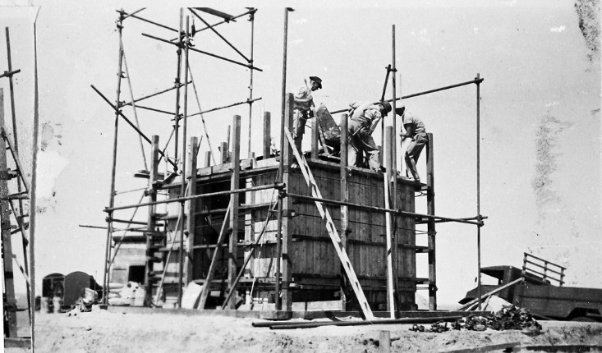
Figure 14. Cape Baily Lighthouse under construction, 1950 (Courtesy of the Local Studies Collection, Sutherland Shire Libraries)[xxiv]
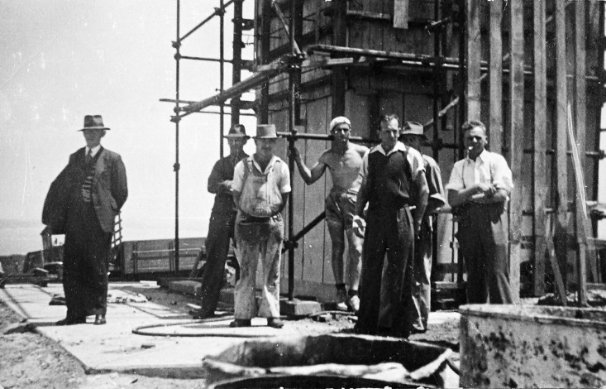
Figure 15. Cape Baily Lighthouse under construction, 1950 (Courtesy of the Local Studies Collection, Sutherland Shire Libraries)[xxv]
Equipment when built
Upon completion, the tower stood as a cast concrete structure atop a 200mm thick concrete slab measuring 9250mm x 9250mm.
The tower was fitted with a Robison Brothers & Company Limited of Melbourne lantern house, which appeared to copy earlier Chance Brother lantern rooms[xxvi]. It is the only known example of this company manufacturing lighthouse equipment.
The Cape Baily light was first lit on the night of 21 December 1950.
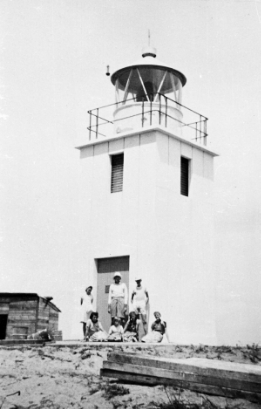
Figure 16. Visitors to Cape Baily Lighthouse, 1950 (Courtesy of the Local Studies Collection, Sutherland Shire Libraries)[xxvii]
An AGA Dalen acetylene flasher unit was fitted within the Chance Brothers lens and served as the tower’s initial light source. Eight large acetylene gas bottles were held in the tower base with gas lines feeding acetylene to the flasher mounted within the lens. Dishes cast into the ground level floor are still evident today although the acetylene bottles were long removed. The sunvalve controlled the flow of acetylene. It opened at dusk and closed at dawn ensuring acetylene was used only during the hours of darkness.
The site is now powered by an array of six solar panels with a low voltage light source.
It is presumed that the lens is of Chance Brothers manufacture due to its resemblance to other lenses from this company.
Due to the light’s automatic capabilities, no lightkeeper was stationed at the lighthouse.
3.6 Chronology of major events
The following table details the major events to have occurred at Cape Baily Lighthouse.
Date | Event |
21 December 1950 | Cape Baily Lighthouse fully functional.[xxviii] |
1967 | Headland reserve comes under the Management of the New South Wales National Parks and Wildlife Service as part of the Kamay Botany Bay National Park.[xxix] |
1988 | Kamay Botany Bay National Park gazetted.[xxx] |
2004 | Cape Baily Lighthouse listed on the Commonwealth Heritage List. |
3.7 Changes and conservation over time
The following section details the changes and conservation efforts to have been carried out at Cape Baily Lighthouse since its construction.
Alteration to the light
The following table details the changes to the Cape Baily light since its exhibition in 1950.
Date | Alteration |
3 February 1987 | Acetylene system removed, solar panels installed. |
For information on current light details, see ‘Appendix 4 Cape Baily Lighthouse current light details’.
Recent conservation works
The following table details the recent conservation works to have occurred at Cape Baily Lighthouse.
Date | Work |
1987 | Mezzanine floor and aluminium ladders installed within tower. |
2018 | Asbestos fibrous cement sheeting from window removed and replaced with new fibrous cement sheeting. Broken window louvres removed from site. |
3.8 Summary of current and former uses
From its construction in 1950, Cape Baily Lighthouse has been used as a marine AtoN for mariners at sea. Its AtoN capability remains its primary use.
3.9 Summary of past and present community associations
Aboriginal associations
The lighthouse resides within a National Park renowned for its rich Aboriginal cultural heritage and history. The local community maintains strong associations with the land on which the lighthouse was built and continues to operate on today. Further information on past and present associations from appropriate knowledge-holders will be included in future versions of the plan.
Local, national and international associations
Cape Baily Lighthouse is considered a significant site of New South Wales and Australian history. The surrounding Kamay Botany Bay National Park is also notable for its associations to national and international conservation efforts.
3.10 Unresolved questions or historical conflicts
It has often been reported that Cape Baily houses a late 19th century lantern. This is incorrect as the builder’s plate on the lantern detail that lantern was constructed by Robinson Bros. in 1950.
3.11 Recommendations for further research
Further investigation on the construction process, and the lighthouse’s early operation management would be beneficial.

4. Fabric
4.1 Fabric register
The cultural significance of the lighthouse resides in its fabric, and also in its intangible aspects, such as the meanings people ascribe to it, and the connections to other places and things. The survival of its cultural value depends on a well-informed understanding of what is significant, and on clear thinking about the consequences of change. The Burra Charter sets out good practice for conserving cultural significance.
Below, each part of the lighthouse is listed and the description, condition and significance of each part is discussed. Criterion listed under ‘Heritage Significance’ refer to the criterion satisfied within the specific Commonwealth heritage listing (see ‘Section 5.1’).
Lighthouse feature: Lantern roof

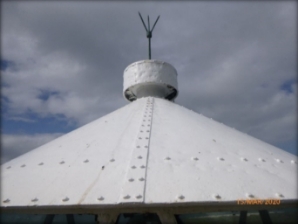 © AMSA 2020
© AMSA 2020
Description and condition
1950 conical roof of copper sheets lapped and riveted. Built with single skin (no internal lining). Supported on circular ring of cast iron segments bolted together. There is no gutter – the roof sheets have a stiffener along the eaves of half-round gutter is formed around the edge of the roof, with holes to allow water to escape – no provision for down pipes. Central drum shaped vent, with circular internal drip tray. Vent has been fully or partly sealed off above the roof. No provision for weather vane.
- Inner skin – none
- Ventilator – drum type
- Lightning conductor – forked lightning conductor on top of vent
- Gutter – none
- Drip tray – circular copper dish suspended under ventilator
Finish | painted |
Condition | intact and sound |
Integrity | high |
Significance | moderate |
Maintenance | keep in service, prepare and repaint at normal intervals |
Rectification works | none |
Heritage significance: Moderate
The lantern roof is an original feature of a lighthouse associated with the ongoing development of navigational aids during the 20th century (criterion a).
The lantern roof is an original feature of a lighthouse associated with the post-war development of Botany Bay as a major port for Sydney (criterion a).
The lantern roof contributes to the aesthetic value of the lighthouse (criterion e).
Lighthouse feature: Lantern glazing

 © AMSA 2021
© AMSA 2021
Description and condition
1950 Robison Bros & Co, cylindrical in form. All glazing is clear – no blank panes.
- Panes – curved trapezoidal panes of glass, single tier.
- Astragals – astragals of rectangular section galvanized steel bolted to roof support ring at the top, and to lantern base below.
Finish | astragals and cover strips painted |
Condition | intact and sound |
Integrity | high |
Significance | moderate |
Maintenance | keep in service, reglaze as necessary, prepare and repaint at normal intervals |
Rectification works | none |
Heritage significance: Moderate
The lantern glazing is an original feature of a lighthouse associated with the ongoing development of navigational aids during the 20th century (criterion a).
The lantern glazing is an original feature of a lighthouse associated with the post-war development of Botany Bay as a major port for Sydney (criterion a).
The lantern glazing contributes to the aesthetic value of the lighthouse (criterion e).
Lighthouse feature: Lantern base



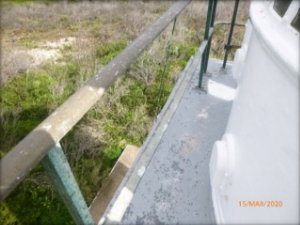

© AMSA 2021
Description and condition
1950 Robison Bros & Co, cylindrical in form. Curved segments of cast iron bolted together with flanged joints.
- Internal lining – none
- Vents – vents have external cast iron cowls with openings downward; air enters through multiple holes drilled through the lantern base – cast non-ferrous metal regulator disks have been removed for maintenance, and are in the spares cupboard on ground floor. Metal hand-holds are fixed to the internal lantern base above the access hatch in the lantern floor.
- Door – balcony access door is of curved steel plate with fittings screwed and bolted to it, fitted with non- ferrous hinges, internal handle, internal finger screws, external maker’s plate.
Finish | all ferrous painted |
Condition | intact and sound |
Integrity | high |
Significance | moderate |
Maintenance | keep in service, prepare and repaint at normal intervals |
Rectification works | none |
Heritage significance: Moderate
The lantern base is an original feature of a lighthouse associated with the ongoing development of navigational aids during the 20th century (criterion a).
The lantern base is an original feature of a lighthouse associated with the post-war development of Botany Bay as a major port for Sydney (criterion a).
The lantern base contributes to the aesthetic value of the lighthouse (criterion e).
Lighthouse feature: Lantern floor


© AMSA 2021
Description and condition
1950 reinforced concrete, with circular concrete upstand to support the lantern base. Hatch cover of aluminium checker-plate hinged to floor.
Finish | painted |
Condition | intact and sound |
Integrity | high |
Significance | low |
Maintenance | keep in service, prepare and repaint at normal intervals |
Rectification works | none |
Heritage significance: Low
Of low significance.
Lighthouse feature: Lens assembly


 © AMSA 2021
© AMSA 2021
Description and condition
1950 Chance Bros 375mm focal radius fixed (non-rotating) lens assembly of glass and gunmetal. Metal access door in one of the landward sectors.
Condition | intact and sound |
Integrity | high |
Significance | moderate |
Maintenance | keep in service, clean at normal intervals |
Rectification works | none |
Heritage significance: Moderate
The lens assembly is an original feature of a lighthouse associated with the ongoing development of navigational aids during the 20th century (criterion a).
The lens assembly is an original feature of a lighthouse associated with the post-war development of Botany Bay as a major port for Sydney (criterion a).
Lighthouse feature: Light source
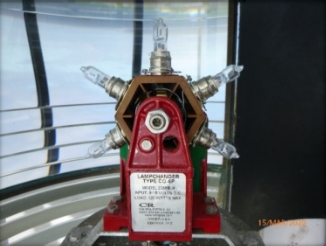 © AMSA 2020
© AMSA 2020
Description and condition
12V 35W C8 Halogen lamp in CR Control S-2086BLR lamp changer.
Condition | intact and sound |
Integrity | high |
Significance | low |
Maintenance | keep in service |
Rectification works | none |
Heritage significance: Low
Of low significance.
Lighthouse feature: Pedestal
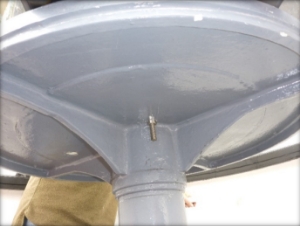
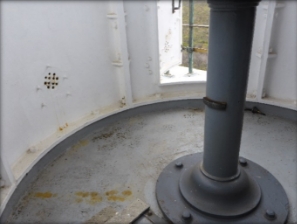
© AMSA 2020
Description and condition
1950 cast ferrous metal pedestal and top.
Finish | painted |
Condition | intact and sound |
Integrity | high |
Significance | moderate |
Maintenance | keep in service, prepare and repaint at normal intervals |
Rectification works | none |
Heritage significance: Moderate
The pedestal is an original feature of a lighthouse associated with the ongoing development of navigational aids during the 20th century (criterion a).
The pedestal is an original feature of a lighthouse associated with the post-war development of Botany Bay as a major port for Sydney (criterion a).
Lighthouse feature: Balcony floor
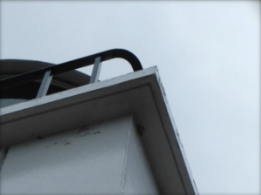
 © AMSA 2020
© AMSA 2020

Description and condition
1950 reinforced concrete slab continuous with lantern floor, square in plan, with cantilever projection over the supporting walls. Rainwater drains freely over all outer edges. Drip groove cast into edge soffit.
Finish | painted |
Condition | some divots from spalling issues, otherwise intact and sound |
Integrity | high |
Significance | moderate |
Maintenance | keep in service, prepare and redo membrane as required |
Rectification works | none |
Heritage significance: Moderate
The balcony floor is an original feature of a lighthouse associated with the ongoing development of navigational aids during the 20th century (criterion a).
The balcony floor is an original feature of a lighthouse associated with the post-war development of Botany Bay as a major port for Sydney (criterion a).
The balcony floor contributes to the aesthetic value of the lighthouse (criterion e).
Lighthouse feature: Balcony balustrade


© AMSA 2020
Description and condition
1950 non-ferrous metal solid rectangular bar rails and stanchions, riveted together. Handrail of shaped section. Stanchions fixed to bolts cast into balcony floor.
Finish | unpainted |
Condition | intact and sound |
Integrity | high |
Significance | moderate |
Maintenance | keep in service |
Rectification works | none |
Heritage significance: Moderate
The balcony balustrade is an original feature of a lighthouse associated with the ongoing development of navigational aids during the 20th century (criterion a).
The balcony balustrade is an original feature of a lighthouse associated with the post-war development of Botany Bay as a major port for Sydney (criterion a).
The balcony balustrade contributes to the aesthetic value of the lighthouse (criterion e).
Lighthouse feature: Walls
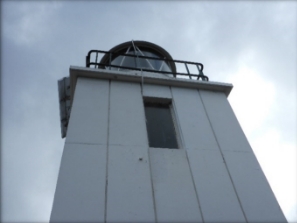
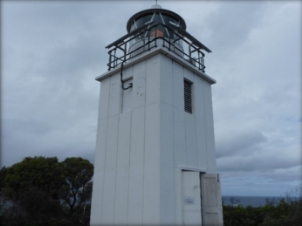
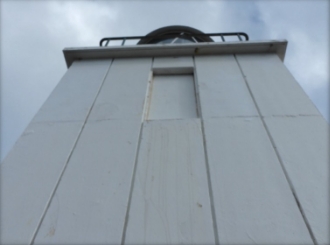 © AMSA 2020
© AMSA 2020
Description and condition
1950 reinforced concrete tower, square in plan.
Finish | painted inside and out |
Condition | intact and sound |
Integrity | high |
Significance | moderate |
Maintenance | keep in service, prepare and repaint at normal intervals |
Rectification works | none |
Heritage significance: Moderate
The walls are an original feature of a lighthouse associated with the ongoing development of navigational aids during the 20th century (criterion a).
The walls are an original feature of a lighthouse associated with the post-war development of Botany Bay as a major port for Sydney (criterion a).
The walls are an unique design which contributes to the rarity of the lighthouse (criterion b).
The walls contribute to the aesthetic value of the lighthouse (criterion e).
Lighthouse feature: Windows

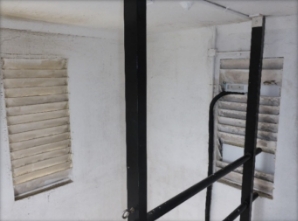
 © AMSA 2020
© AMSA 2020
Description and condition
One window in each wall at the upper level; three of these have fixed sheeting over painted glass louvres, the other has a fixed pane of glass. 2018, asbestos fibrous cement sheeting removed and replaced with new fibrous cement sheeting. Broken louvres have been removed from site.
Finish | painted, except for one fixed pane of clear glass |
Condition | sound |
Integrity | moderate |
Significance | low |
Maintenance | replace glazing as required |
Rectification works | none |
Heritage significance: Low
Of low significance.
Lighthouse feature: Door


© AMSA 2021
Description and condition
Pair of 1950 timber framed and sheeted doors in timber frame. Faced with steel plate on the outside. Steel locking bar pivoted to one of the doors.
Finish | painted |
Condition | intact and sound |
Integrity | high |
Significance | moderate |
Maintenance | keep the doors in service, prepare and paint at normal intervals |
Rectification works | none |
Heritage significance: Moderate
The door is an original feature of a lighthouse associated with the ongoing development of navigational aids during the 20th century (criterion a).
The door is an original feature of a lighthouse associated with the post-war development of Botany Bay as a major port for Sydney (criterion a).
Lighthouse feature: Mezzanine floor
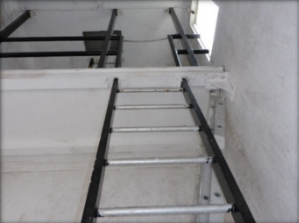
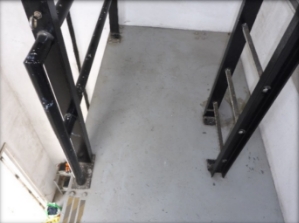 © AMSA 2020
© AMSA 2020
Description and condition
Post 1970 plywood floor supported on aluminium beams and brackets bolted to concrete walls.
Finish | painted |
Condition | intact and sound |
Integrity | moderate |
Significance | low |
Maintenance | keep in service, prepare and repaint at normal intervals |
Rectification works | none |
Heritage significance: Low
Of low significance.
Lighthouse feature: Access ladders
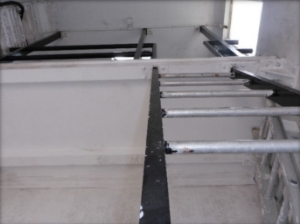

© AMSA 2020
Description and condition
Post 1970 fixed ladders – one from ground floor to mezzanine, and another from mezzanine to lantern. Ladders have aluminium styles and rungs. Non- slip sheeting attached to the rungs.
Finish | stiles: painted rungs: bare with non-slip sheeting |
Condition | sound |
Integrity | moderate |
Significance | low |
Maintenance | keep in service, prepare and repaint as required, replace non-slip sheeting as required |
Rectification works | none |
Heritage significance: Low
Of low significance.
Lighthouse feature: Ground floor

 © AMSA 2020
© AMSA 2020
Description and condition
1950 reinforced concrete slab on ground. Depressions to accommodate the bases of acetylene bottles are visible.
Finish | painted |
Condition | intact and sound |
Integrity | high |
Significance | moderate |
Maintenance | keep in service, prepare and repaint at normal intervals |
Rectification works | none |
Heritage significance: Moderate
The ground floor is an original feature of a lighthouse associated with the ongoing development of navigational aids during the 20th century (criterion a).
The ground floor is an original feature of a lighthouse associated with the post-war development of Botany Bay as a major port for Sydney (criterion a).
Lighthouse feature: Apron slab
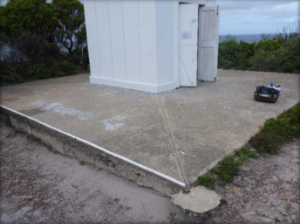
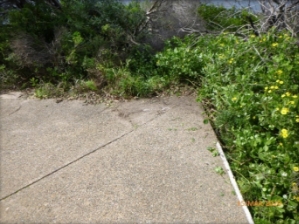 © AMSA 2020
© AMSA 2020
Description and condition
1950 reinforced concrete slab laid on ground, bare concrete finish. The original security fence has been removed, leaving galvanised steel pipe posts in concrete footings flush with the ground.
Finish | trowelled bare concrete |
Condition | numerous old cracks in the surface of slab, otherwise intact and sound |
Integrity | high |
Significance | low |
Maintenance | keep in service, investigate cracking in apron slab |
Rectification works | investigate cracking in apron slab |
Heritage significance: Low
Of low significance.
4.2 Related object and associated AMSA artefacts
There are currently no AMSA artefacts located at Cape Baily Lighthouse.
4.3 Comparative analysis
Cape Baily lighthouse is closest in design to two other AMSA-operated lighthouses, Stokes Point and Cape Liptrap.
Cape Liptrap is located in north-east Victoria and was built one year after Cape Baily in 1951 to replace an earlier 1913 lighthouse. Stokes Point is located on the southern end of King Island, Tasmania. Built in 1952, the lantern room was removed at a later date. Similarly to Cape Baily, Cape Liptrap and Stokes Point are simple square lighthouses
Both Stokes Point and Cape Liptrap vary markedly in design from Cape Baily as can be seen in Figures 17 & 18 below.
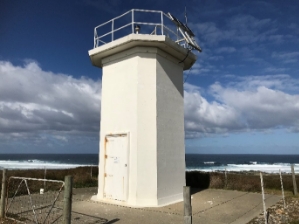
 Figure 17. Stokes Point Lighthouse (© AMSA, 2017)
Figure 17. Stokes Point Lighthouse (© AMSA, 2017)
Figure 18. Cape Liptrap Lighthouse (© AMSA, 2013)

5. Heritage significance
5.1 Commonwealth heritage listing –Cape Baily Lighthouse
The following information is taken directly from the Commonwealth Heritage listing for Cape Baily Lighthouse (Place ID: 105571).
Commonwealth statement of significance
The following statement of significance is taken directly from Cape Baily Lighthouse’s Commonwealth heritage listing:
Cape Baily Lighthouse, constructed during 1950-51, is significant for reflecting the ongoing development of navigational aids along the Australian coast during the twentieth century, and for its association with the post-war development of Botany Bay as a major port for Sydney. (Criterion A.4) (Themes: 3.8.1 Shipping to and from Australian ports, 3.16.1 Dealing with hazards and disasters)
The lighthouse is unusual in that it is comprised of a 1950s concrete tower and a late nineteenth century lantern. (Criterion B.2)
The tower, located on a rise behind dramatic cliffs, and rising above coastal vegetation and wetlands, is a landmark feature of the local area. (Criterion E.1)
Commonwealth heritage criteria
There are nine criteria for inclusion in the Commonwealth Heritage List, meeting any one of these is sufficient for listing a place. These criteria are similar to those used in other Commonwealth, state and local heritage legislation, although thresholds differ. In the following sections, Cape Baily Lighthouse is discussed in relation to each of the criteria as based on the site’s current Commonwealth Heritage Listing (Place ID: 105571)
Criterion | Attributes | Explanation |
Criterion A) Processes This criterion is satisfied by places that have significant heritage value because of [their] importance in the course, or pattern, of Australia’s natural or cultural history. | All of the form and fabric of the lighthouse. | Cape Baily Lighthouse, constructed during 1950-51, is significant for reflecting the ongoing development of navigational aids along the Australian coast during the twentieth century, and for its association with the post-war development of Botany Bay as a major port for Sydney. |
Criterion B) Rarity This criterion is satisfied by places that have significant heritage value because of [their] possession of uncommon, rare or endangered aspects of Australia’s natural or cultural history. | The nineteenth century lantern. | The lighthouse is unusual in that it is comprised of a 1950s concrete tower and a late nineteenth century lantern. |
Criterion E) Aesthetic characteristics This criterion is satisfied by places that have significant heritage value because of [their] importance in exhibiting particular aesthetic characteristics values by a community or cultural group. | The external form and appearance of the tower, within its natural landscape setting. | The tower, located on a rise behind dramatic cliffs, and rising above coastal vegetation and wetlands, is a landmark feature of the local area. |
These heritage values, identified and explained in the Commonwealth Heritage List, will form the basis of the management of Cape Baily Lighthouse. In the event of necessary works, all criteria will be consulted to inform best practice management of the values associated with the lighthouse. (See ‘Section 7. Conservation management policies’ for further information on strategies to conserve heritage values of Cape Baily Lighthouse)
5.2 Condition and integrity of Commonwealth heritage values
A heritage monitoring program was implemented in 2016. Each site is visited and reviewed every two years where the heritage fabric and values of the site are evaluated. Assessment of the condition and integrity of lighthouse's Commonwealth heritage values are derived from the latest available Heritage Asset Condition Report produced by AMSA’s maintenance contractor.
‘Condition’ is measured from good to poor and incorporates the current condition of the specific value. Integrity is measured from high to low and incorporates the value’s intactness. Cape Baily Lighthouse’s Commonwealth heritage values and its associated attributes maintain good condition and high integrity.
The Commonwealth heritage values for Cape Baily Lighthouse exhibit good condition and high-medium integrity due to the incorrect information included in its listing.
Value | Values (including attributes) | Condition | Integrity |
Criterion A) Processes | Cape Baily Lighthouse, constructed during 1950-51, is significant for reflecting the ongoing development of navigational aids along the Australian coast during the twentieth century, and for its association with the post-war development of Botany Bay as a major port for Sydney. | Good | High |
Criterion B) Rarity | The lighthouse is unusual in that it is comprised of a 1950s concrete tower and a late nineteenth century lantern. | Good | Medium |
Criterion E) Aesthetic characteristics | The tower, located on a rise behind dramatic cliffs, and rising above coastal vegetation and wetlands, is a landmark feature of the local area. | Good | High |
5.3 Gain or loss of Commonwealth heritage values
Criterion B (Rarity) of the Commonwealth Heritage listing is incorrect. The lantern housed in Cape Baily was constructed in 1950 by Australian company Robinson Brothers of Melbourne. However, the design of the Cape Baily Lighthouse is the only known example of its kind. It can be argued that there remains compliance with this criterion.
There are no current occurrences of a gain or loss of heritage value at the site at the time this management plan was prepared. Evidence for the potential gain or loss of heritage values will be documented within this section in future versions of the plan.

6. Opportunities and constraints
6.1 Implications arising from significance
The Commonwealth statement of significance (section 5.1 above) demonstrates Cape Baily Lighthouse is a place of considerable heritage value due to its association with aid to navigation efforts in the post-war period, its rarity and for its aesthetic qualities.
The implication arising from this assessment is that key aspects of the place should be conserved to retain this significance. The key features requiring conservation include:
- continued use of the lighthouse as an AtoN
- architectural quality of the building
- interior spaces and features, which are notable for their design, details and/or their original lighthouse function. These include:
- lantern room
- original lens assembly and pedestal
- ground floor
- external spaces and features, which are notable for their design, details, and/or their original lighthouse function. These include:
- lantern roof and glazing
- lantern base
- balcony and balustrades
- walls
- doors.
Referral and approvals of action
The EPBC Act requires approval from the Minister for the Environment for all actions likely to have a significant impact on matters of National Environmental Significance (NES).
The Act provides that actions taken:
- on Commonwealth land which are likely to have a significant impact on the environment will require approval of the Minister.
- outside Commonwealth land which are likely to have a significant impact on the environment on Commonwealth land will require approval of the Minister.
- by the Australian Government or its agencies which are likely to have a significant impact on the environment anywhere will require approval of the Minister.
The definition of ‘environment’ in the EPBC Act and EPBC Regulations includes the cultural heritage values of places.
Heritage strategy
If an Australian Government agency owns or controls one or more places with Commonwealth heritage values, it must prepare a heritage strategy within two years from the first time they own or control a heritage place (section 341ZA).
A heritage strategy is a written document that integrates heritage conservation and management within an agency’s overall property planning and management framework. Its purpose is to help an agency manage and report on the steps it has taken to protect and conserve the commonwealth heritage values of the properties under its ownership or control.
The heritage strategy for AMSA’s AtoN assets was completed and approved by the Commonwealth Minister for the Environment in 2018 and reviewed in 2022. The latest version of the Strategy is available online.P37F[xxxi]
Heritage asset condition report
A heritage asset condition report is a written document that details the heritage fabric of a site with an in-depth description of each architectural and structural element. The document includes: a brief history of the site, the Commonwealth Heritage statement of significance and value criteria, a heritage significance rating for each individual element, and a catalogue of artefacts on-site. The document is also accompanied by up-to-date photos of each structural element. This document operates as a tool for heritage monitoring, and is reviewed and updated biennially.
Aboriginal cultural heritage and natural values
Cape Baily and Kamay Botany National Park as a whole is notable for Aboriginal cultural heritage and natural values. Although these values lie outside of the Commonwealth heritage listing curtilage and AMSA’s lease, the potential remains for future works at the lighthouse to impact these values. At the time this plan was written, no plans have been made for future works at Cape Baily Lighthouse. In the event major works at the lighthouse are to be carried out, AMSA will seek to minimise impacts to the surrounding area by:
- Utilising specific access tracks to ensure no damage to surrounding vegetation,
- Consulting with NSW NPWS to ensure work does not impact sacred areas or areas of environmental concern,
- Ensuring project footprint is limited to the AMSA lease. In any instance that work is required outside of this footprint, approvals will be sought from the appropriate stakeholders.
6.2 Framework: sensitivity to change
Owing to the site’s association with 20th century aids to navigation activities, its rare components, and aesthetic qualities, Cape Baily Lighthouse is of high significance. Therefore, work actioned by AMSA on the lighthouse’s fabric harnesses the potential to reduce or eradicate the significance of the site’s heritage values.
Conservation works, including restoration and reconstruction, or adaption works of the absolute minimum so as to continue the lighthouse’s usefulness as an AtoN are the only works that should be actioned by AMSA on Cape Baily Lighthouse. Some exceptions are made for health and safety requirements, however any and all work carried out must be conducted in line with heritage considerations and requirements of the EPBC Act.
The table below demonstrates the level of sensitivity attributed to the various elements of the fabric register in the face of change. These are measured from high to low depending on the action’s possible threat to the site’s heritage values.
High sensitivity
High sensitivity to change includes instances wherein a change would pose a major threat to the heritage value of a specific fabric, or the lighthouse as a whole. A major threat is one that would lead to substantial or total loss of the heritage value.
Moderate sensitivity
Moderate sensitivity to change includes instances wherein a change would pose a moderate threat to the heritage value of a specific fabric, or to the heritage significance of a specific fabric in another part of the building. A moderate threat is one that would diminish the heritage value, or diminish the ability of an observer to appreciate the value.
Low sensitivity
Low sensitivity to change includes instances wherein a change would pose little to no threat to the heritage value of a specific fabric, or to the heritage significance in another part of the building.
Component | Level of sensitivity | Nature of change impacting heritage values |
Cape Baily Lighthouse structure | High | - Reduction of visibility of structure and its setting on Cape Baily.
- Major alterations to the tower colours scheme.
- Prominent alterations and additions to the exterior that would impact the current lighthouse footprint and envelope.
|
Low | - Removal of asbestos, lead paint and other toxic materials.
- Implementation of health and safety hazard markings.
|
Ground floor | High | - Major alterations to original concrete floor.
|
Moderate | - Removal of remnant depressions in ground floor from acetylene bottles.
|
Low | - Repainting of ground floor in like-colours.
- Removal or replacement of battery racks from ground floor.
|
Mezzanine floor | Low | - Replacement of plywood floor and aluminium beams with like-materials.
- Repainting of mezzanine floor in like-colours.
- Corrosion reparations to beams and brackets.
|
Access ladders | Low | - Replacement of fixed ladders in like-materials.
- Replacement of non-slip sheeting to ladder rungs.
- Repainting of ladder stiles in like-colours.
|
Lantern room (including external base) | High | - Removal of original lantern base.
|
Low | - Reparations to concrete floor with like-materials.
- Corrosion reparations to hatch cover or lantern base walls.
- Repainting of lantern floor in like-colours.
|
Balcony and balustrades | Moderate | - Major alterations to original reinforced balcony floor.
- Major alterations to original balustrades.
|
Low | - Repainting of balcony floor in like-colours.
- Corrosion reparations to balustrades.
- Replacement of membrane.
- Replacement of rainwater drains.
|
Lantern glazing | High | - Alteration to original trapezoidal-form glazing panes.
- Major alterations to original Robinson Bros. glazing astragals.
|
Low | - Repainting of astragals in like-colours.
- Replacement of broken glazing panes.
- Resealing of lantern room glazing.
|
Lantern roof | High | - Major alterations to original conical roof.
|
Low | - Repainting of lantern roof in like-colours.
- Corrosion reparations to lantern roof (including ventilator and drip tray).
|
Lens assembly and light source | High | - Removal of 1950 Robinson Bros. 375mm focal radius lens assembly from Cape Baily.
|
Low | - Replacement or removal of LED array.
- Cleaning of lens.
|
Pedestal | High | |
Low | - Repainting of pedestal in like-colours.
- Corrosion reparations to cast ferrous pedestal.
|
Walls | High | - Major alterations to the original concrete walls.
|
Low | - Repainting of walls in like colours.
|
Windows | Moderate | - Major alterations to the original windows openings.
|
Low | - Replacement of broken glass louvres, pane, or cement sheeting.
- Repainting of cement sheeting blank panes in like-colours.
- Corrosion reparations to hinges and frames.
|
Doors | High | - Major alterations to original ground floor door opening.
|
Low | - Corrosion reparations to plate and locking bar.
- Repainting of ground floor door in like-colours.
|
Apron slab | Low | - Reparation to concrete cracking.
|
6.3 Statutory and legislative requirements
The following table lists the Acts and codes relevant to the management of Cape Baily Lighthouse.
Act or code | Description |
Environment Protection and Biodiversity Conservation Act 1999 (Cth) | The Environment Protection & Biodiversity Conservation Act 1999 (Cth) requires agencies to prepare management plans that satisfy the obligations included in Schedule 7A and 7B of the EPBC Regulations. |
Environment Protection and Biodiversity Conservation Regulations 2000 (Cth) Schedule 7B | The Commonwealth Department of Climate Change, Energy, the Environment and Water has determined these principles as essential for guidance in managing heritage properties. - The objective in managing Commonwealth Heritage places is to identify, protect, conserve, present and transmit, to all generations, their Commonwealth Heritage values.
- The management of Commonwealth Heritage places should use the best available knowledge, skills and standards for those places, and include ongoing technical and community input to decisions and actions that may have a significant impact on their Commonwealth Heritage values.
- The management of Commonwealth Heritage places should respect all heritage values of the place and seek to integrate, where appropriate, any Commonwealth, state, territory and local government responsibilities for those places.
- The management of Commonwealth Heritage places should ensure that their use and presentation is consistent with the conservation of their Commonwealth Heritage values.
- The management of Commonwealth Heritage places should make timely and appropriate provision for community involvement, especially by people who:
(a) have a particular interest in, or associations with, the place; and (b) may be affected by the management of the place; - Indigenous people are the primary source of information on the value of their heritage and that the active participation of indigenous people in identification, assessment and management is integral to the effective protection of indigenous heritage values.
- The management of Commonwealth Heritage places should provide for regular monitoring, review and reporting on the conservation of Commonwealth Heritage values.
|
AMSA Heritage Strategy 2022-2025 | As the custodian of many iconic sites, the Australian Maritime Safety Authority (AMSA) has long recognised the importance of preserving their cultural heritage. This Heritage Strategy is in response to section 341ZA of the EPBC Act (1999) which obliges AMSA to prepare and maintain a heritage strategy, along with obliging AMSA to: - Assist in identification, assessment and monitoring of places of heritage value in its care;
- Prepare and maintain a register of its places of heritage value;
- Protect the heritage value of places when they are sold or leased;
- Provide this heritage strategy, and any subsequent major updates, to the relevant minister.
The strategy derives from the AMSA Corporate Plan and achievements are reported through the AMSA Annual Report. The 2021-22 AMSA Annual report can be found online.[xxxii] |
Navigation Act 2012 (Cth) | Part 5 of the Act outlines AMSA’s power to establish, maintain and inspect marine aids to navigation (such as Cape Baily Lighthouse). (1) AMSA may: (a) establish and maintain aids to navigation; and (b) add to, alter or remove any aid to navigation that is owned or controlled by AMSA; and (c) vary the character of any aid to navigation that is owned or controlled by AMSA. (2) AMSA, or person authorised in writing by AMSA may, at any reasonable time of the day or night: (a) inspect any aid to navigation or any lamp or light which, in the opinion of AMSA or the authorised person, may affect the safety or convenience of navigation, whether the aid to navigation of the lamp or light is the property of: (i) a state or territory; or (ii) an agency of a state or territory; or (iii) any other person; and (b) enter any property, whether public or private, for the purposes of an inspection under paragraph (a); and (c) transport, or cause to be transported, any good through any property, whether public or private, for any purpose in connection with: (i) the maintenance of an aid to navigation that is owned or controlled by AMSA; or (ii) the establishment of any aid to navigation by AMSA. |
Australian Heritage Council Act 2003 (Cth) | This Act establishes the Australian Heritage Council, whose functions are: - to make assessments under Division 1A and 3A of Part 15 of the EPBC Act 1999;
- to advise the Minister on conserving and protecting places included, or being considered for inclusion, in the National Heritage List or Commonwealth Heritage List;
- to nominate places for inclusion in the National Heritage List or Commonwealth Heritage List;
- to promote the identification, assessment, conservation and monitoring of heritage;
- to keep the Register of the National Estate;
- to organise and engage in research and investigations necessary for the performance of its functions;
- to provide advice directly to any person or body or agency either if its own initiative of at the request of the Minister; and
- to make reports as outlined in the Act.
|
Building Code of Australia | The Code is the definitive regulatory resource for building construction, providing a nationally accepted and uniform approach to technical requirements for the building industry. It specifies matters relating to building work in order to achieve a range of health and safety objectives, including fire safety. As far as possible, Commonwealth agencies aim to achieve compliance with the Code, although this may not be entirely possible because of the nature of and constraints provided by existing circumstances, such as an existing building. |
Work Health and Safety Act 2011 (Cth) | The objectives of this Act include: (1) The main object of this Act is to provide for a balanced and nationally consistent framework to secure the health and safety of workers and workplaces by: a) protecting workers and other persons against harm to their health, safety and welfare through the elimination or minimisation of risks arising from work; and b) providing for fair and effective workplace representation, consultation, co‑operation and issue resolution in relation to work health and safety; and c) encouraging unions and employer organisations to take a constructive role in promoting improvements in work health and safety practices, and assisting persons conducting businesses or undertakings and workers to achieve a healthier and safer working environment; and d) promoting the provision of advice, information, education and training in relation to work health and safety; and e) securing compliance with this Act through effective and appropriate compliance and enforcement measures; and f) ensuring appropriate scrutiny and review of actions taken by persons exercising powers and performing functions under this Act; and g) providing a framework for continuous improvement and progressively higher standards of work health and safety; and h) maintaining and strengthening the national harmonisation of laws relating to work health and safety and to facilitate a consistent national approach to work health and safety in this jurisdiction. (2) In furthering subsection (1)(a), regard must be had to the principle that workers and other persons should be given the highest level of protection against harm to their health, safety and welfare from hazards and risks arising from work as is reasonably practicable. [Quoted from Division 2 of Act] This has implications for Cape Baily Lighthouse of Australia as it is related to AMSA staff, contractors and visitors. |
6.4 Operational requirements and occupier needs
As a working AtoN, the operational needs of Cape Baily Lighthouse are primarily concerned with navigational requirements. Below are the operational details and requirements of the Cape Baily light as outlined by AMSA.
Navigation requirement for AMSA’s AtoN site
The following table is taken from AMSA’s Asset Management Strategy for the Cape Baily light.
1 | Objective/rationale | An AtoN is required at this site to mark the precipitous Kurnell Peninsular between Botany Bay and Port Hacking. The AtoN is required to provide both a landfall mark from seaward and a mark for coastal navigation for inshore traffic. |
2 | Required type(s) of AtoN | A fixed structure is required to act as a daymark. A distinctive light is required for use at night. |
3 | Priority/significance | An AtoN at this site is important for the navigation of commercial ships |
4 | Required measure of performance | The service performance of the AtoN must comply with the IALA Availability Target Category 1 (99.8%). |
5 | Primary and secondary means (if any) of identification | The daymark must be conspicuous from seaward. The existing white colour of the structure meets this requirement. The light must comply with the requirements of rhythmic characters of light as per the IALA NAVGUIDE. The light must have distinct characteristics that are easy to recognise and identify. The current characteristic of group flashing white light at every 16 seconds meets this requirement. |
6 | Visual range | During daytime, the AtoN structure should be visible from at least 5 nautical miles. At night, the white light must have a nominal range of at least 13 nautical miles. |
7 | Radar conspicuousness | As the coast on which the structure is located can provide a good radar return, no additional radar enhancement is required. |
AMSA’s goals
AMSA is responsible, under the Navigation Act, for maintaining a network of marine AtoN around Australia’s coastline that assist mariners to make safe and efficient passages. AMSA’s present network of approximately 500 marine AtoN includes traditional lighthouses such as Cape Baily, beacons, buoys, racons, automatic identification system stations, metocean sensors including broadcasting tide gauges, current meter, directional wave rider buoys and a weather station.
Technological developments in the area of vessel traffic management have also contributed to increasing navigation safety and helped promote marine environment protection. AMSA aims to meet international standards for the reliability of lighthouses set by the International Association of Marine Aids to Navigation and Lighthouse Authorities (IALA).
At the time of preparing this management plan, the major goal for Cape Baily Lighthouse primarily encompassed continuing its utilisation as an AtoN (for as long as necessary), while upkeeping the appropriate maintenance to conserve and preserve the heritage values of the lighthouse.
Lighthouse performance standards
AMSA aims to meet international standards for the reliability of lighthouses set by IALA. Cape Baily light is designated as an IALA Availability Category 1 AtoN (within a scale of Category 1 to Category 3, Category 1 aids are most critical). Category 1 aids have an availability target of 99.8 per cent.
Access to the lighthouse
One practical effect of this performance standard is that the operational equipment and structure of the light need to be kept in good repair by regular maintenance. Routine maintenance and emergency repairs are carried out by AMSA’s maintenance contractor. The contractor needs reliable access to the site for this work, and AMSA officers need access for occasional inspections of the site including to audit the contractor’s performance.
6.5 Proposals for change
Preventative maintenance works are carried out on the lighthouse to maintain its status as a working marine AtoN, and to assist in the site’s conservation.
A list of scheduled preventative maintenance work is identified within the latest available site inspection report. The information provided below was taken from this report.
Maintenance | Estimated date of work |
Structure paint | 2032 |
6.6 Potential pressures
A significant pressure that harnesses the potential to affect the Commonwealth heritage values of the place would be the obligation to remove or replace original fabric materials from the lighthouse owing to unavoidable and irreversible deterioration.
At the time this plan was written, no current plans exist to remove or replace any original fabric materials from Cape Baily Lighthouse. In the event plans are made to modify or remove heritage fabric, work will be conducted in line with the heritage considerations and requirements of the EPBC Act.
6.7 Processes for decision-making
Processes for decision-making are required in the event of an incident that impacts the heritage values of the site. The following incidents are included due to their likelihood of occurrence at Cape Baily Lighthouse.
Incident | Procedure |
Major project/maintenance works proposed | - Prepare Heritage Impact Statement on proposed modifications.
- Submit scope of works and Heritage Impact Statement to the Department of Climate Change, Energy, the Environment and Water.
- Notify NSW NPWS.
|
Damage to lighthouse’s fabric (heritage significance) | - AMSA or selected contractors assess extent of damage.
- Seek heritage advice on restoration of heritage fabric impacted.
- Identify possible loss of heritage value (at both state and Commonwealth level).
- Seek the appropriate approvals for restoration of heritage fabric impacted.
- Implement best-practice management of restoration work in keeping with the original character of the place.
- In the case of a loss of heritage value, prepare report for submission to the Heritage Council.
- Update record-keeping of incident and make available to relevant personnel.
|
Damage to lighthouse’s fabric (no heritage significance) | - AMSA or selected contractors to assess extent of damage.
- Identify possible impact on heritage fabric in any work carried out to restore fabric.
- Implement best-practice management of restoration work.
- Update record-keeping of incident and make available to relevant personnel.
|
Light upgrade (replacement and/or removal of AtoN light source) | - Assess possible loss of heritage value in the event of an upgrade.
- If necessary, seek expert heritage advice on process of upgrade.
- If necessary, seek heritage approvals for the upgrade of light.
- Implement best-practice management of light upgrade work.
- Update record-keeping and make available to relevant personnel.
|
Modification to lighthouse such as adding of attachment | - Assess possible obstruction to light.
- Seek heritage approvals for attachment to tower.
- Monitor attachment and update record-keeping.
|
Unforeseen discovery of Aboriginal artefacts on-site. | - Immediate stop-work. Create temporary 'buffer' zone and allow no entry in zone until artefacts have been assessed by appropriate personnel.
- Notify NSW NPWS and Heritage NSW as soon as possible.
- Delay work on site until artefacts have been appropriately assessed, and/or extracted and further investigations carried out in surrounding area.
- Update record-keeping of unforeseen discovery and make available to relevant personnel.
|
Divestment of lighthouse from AMSA | - Transfer ownership or control of heritage assets to the NSW NPWS.
- Transfer relevant records and historical information held by AMSA to the NSW NPWS.
|
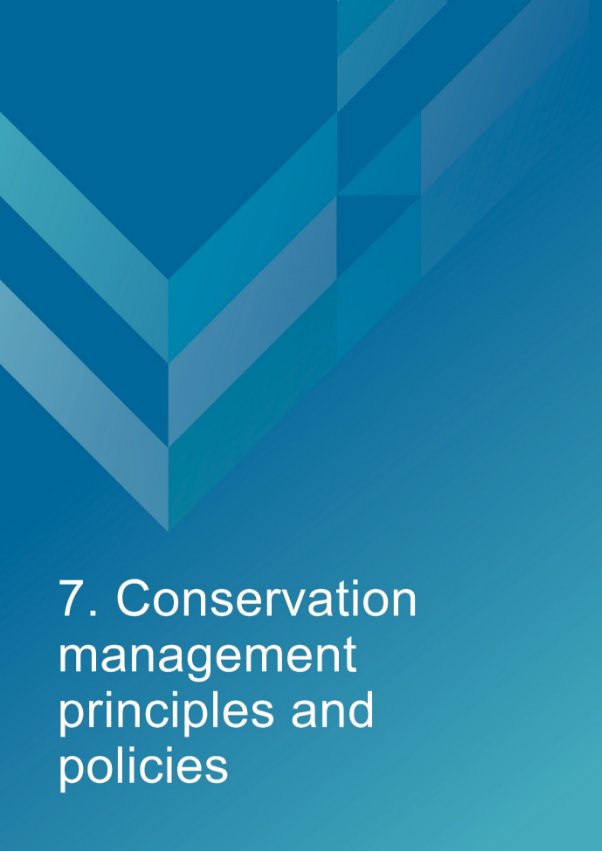
7. Conservation management principles and policies
Policies
Note: The management of sensitive information is not relevant to AMSA’s heritage strategy and therefore bears no relevance in this management plan.
Fabric and setting
Policy 1 – Protect and conserve the significant external and internal fabric of the lighthouse, including existing buildings, layout and setting.
AMSA’s main purpose is to facilitate the ongoing operation of the site as a marine AtoN while preserving the site’s heritage values. As part of a heritage monitoring program, Heritage Asset Condition Reports are produced for each site every two years to evaluate the condition of the heritage fabric and values. Routine servicing is also carried out by maintenance contractors. Regular written reports from these visits will be sent to AMSA Asset Management and Preparedness for review and any work requirements identified will be scheduled accordingly. Should for some unforeseen reason the site no longer be viable as a marine AtoN, ownership will be passed to an appropriate state or federal authority to ensure preservation of the heritage assets.
Implementation strategy:
- AtoN Maintenance Contractor will continue scheduled periodic maintenance of the lighthouse and marine aids to navigation every 12 months to ensure condition is monitored for early warning of deterioration. Schedule must be approved by AMSA Asset Management and Preparedness.
- AMSA Asset Management and Preparedness to arrange for maintenance to be carried out on the lighthouse as required while continuing to operate as an AMSA marine AtoN.
- AtoN Maintenance Contractor to continue scheduled heritage monitoring visits to Cape Baily Lighthouse and review of the Heritage Asset Condition Reports every two years.
- AMSA Asset Management and Preparedness to arrange for the replacement and upgrading of marine equipment in the lighthouse as required to meet AMSA’s service commitment, in a manner that preserves the original fabric of the lighthouse.
- AMSA Asset Management and Preparedness to maintain information on the heritage fabric of the lighthouse including any and all actions, treatments and inspection outcomes within the heritage fabric register. See ‘Section 4.1 for Fabric register’.
- AMSA Asset Management and Preparedness to conserve all the fabric elements identified as significant in the Heritage Asset Condition Report.
- AMSA Asset Management and Preparedness to seek expert materials conservation advice when considering repair, restoration and reconstruction of historic fabric. The relevant local, state and Commonwealth heritage approvals must be sought prior to repair, restoration and reconstruction.
- AMSA AtoN Heritage Coordinator to conserve the distinctive character of the lighthouse by collecting photographic evidence and historical documentation of the original fabric.
Uses
Policy 2 – Install and operate equipment in the lighthouse, so it continues to function as an effective marine AtoN, in such a way as to impose the least possible harm to the significant fabric.
Cape Baily Lighthouse’s use as a working marine AtoN is of high priority. Carrying out maintenance, including upgrades to navigational equipment, is necessary to its function and continued marine safety along the NSW coast. In the event of the installation or upgrade to AtoN equipment, proper precaution will be taken to ensure the least possible harm is done to significant fabric.
Implementation strategy:
- AtoN Maintenance Contractor to monitor Cape Baily’s AtoN equipment every 12 months and propose maintenance in the instance of necessary installation or removal. Proposed maintenance is to be approved by AMSA Asset Management and Preparedness.
- AtoN Maintenance Contractor and AMSA Asset Management and Preparedness to outline all possible risks to significant fabric (external and internal) associated with the installation, removal and operation of equipment.
- AMSA Asset Management and Preparedness to ensure works carried out are those that ensure the least possible harm to significant fabric.
- AMSA Asset Management and Preparedness to seek expert heritage conservation advice on best practice management of the site during installation, removal and operation of equipment.
Policy 3 – Monitor possible impacts to the site resulting from tourism and control appropriate access to the lighthouse for contractors and visitors.
Cape Baily Lighthouse is not currently open to the general public with access inside the lighthouse restricted to authorised personnel, such as contractors and AMSA employees. AMSA personnel and contractors require easy access inside the lighthouse tower for periodical site visits to carry out inspections and routine maintenance.
Implementation strategy:
- AtoN Maintenance Contractor to ensure control of access inside the lighthouse is maintained by periodically inspecting restricted access areas during maintenance visits every 12 months.
- AtoN Maintenance Contractor and AMSA Asset Management to report instances of vandalism through internal channels, assess for impact on heritage values and conduct repairs.
- AtoN Maintenance Contractor to report instances of forced entry
- AtoN Maintenance Contractor to inspect lighthouse for signs of wear and tear attributed to visitor intake during yearly maintenance visit, and note changes in Heritage Asset Condition Report.
- AMSA Asset Management and Preparedness to ensure access to the lighthouse complies with workplace health and safety measures.
- AMSA Asset Management and Preparedness to ensure contractors are made aware of the heritage values of the lighthouse.
- AMSA Asset Management and Preparedness to ensure access to site is available for Traditional Owners to maintain cultural traditions.
Interpretation
Policy 4 – Accurate and relevant interpretation of the history and significance of the place should be made available to site users/visitors and for offsite external research.
AMSA will continue to make information available through the maintenance of site interpretive signage and its website.
Implementation strategy:
- All relevant information concerning the history and significance of the place will be checked for accuracy and updated appropriately.
- Information will be primarily presented in the form of online resource files, accessible to both relevant personnel and the general public. On-site signage will be installed where possible.
- This information will be maintained and updated in accordance with changes to the history and significance of the place.
Management
Policy 5 – AMSA will continue to conserve the lighthouse in accordance with Commonwealth heritage listing requirements.
For works requiring heritage approval, AMSA will obtain permission from any relevant state or federal authorities. Continuous and as-needed conservation works will be undertaken as required.
Implementation strategy:
- AMSA Asset Management and Preparedness to liaise with the relevant Commonwealth and State heritage agencies when proposing work on the site.
- AMSA Asset Management and Preparedness to consult with NSW NPWS when proposing work on site.
- Approval in writing from the relevant Commonwealth and State heritage authorities must be granted for any proposals for development.
Policy 6 – The cultural significance of the lighthouse will be the basis for deciding how to manage it.
The heritage values or cultural significance of the place must be conserved. This heritage management plan includes relevant background information to support this policy (see ‘Section 3 History’ & ‘Section 5 Heritage Significance’).
Implementation strategy:
- Conserve the lighthouse to protect its heritage values (cultural significance).
- When possible, strive to maintain the original fabric of the lighthouse.
- Use the Burra Charter as the primary guide for treatment of fabric.
- Engage appropriately qualified heritage consultants when making decisions regarding impact on heritage values.
- Assess impacts on the heritage values of the place when considering proposed alterations or adaptations.
Policy 7 – Monitor, review and report the Commonwealth heritage values of the lighthouse every five years or sooner if major changes to the lighthouse occur.
The Commonwealth heritage values of the lighthouse are to be monitored and reported on a regular basis. A Heritage Asset Condition Report is updated for Cape Baily Lighthouse every two years. The report records historical information, condition, and maintenance requirements for fabric within the lighthouse to ensure the gain and/or loss of heritage value is identified.
Implementation strategy:
- AMSA Asset Management and Preparedness to regularly monitor the lighthouse for possible impacts on the identified Commonwealth heritage values.
- AtoN Maintenance Contractor to update the Heritage Asset Condition Report every two years, and AMSA AtoN Heritage Coordinator to review the reports.
- AMSA Asset Management and Preparedness to review the current Commonwealth heritage values at least once every five years and assess any gain/loss of values. This review must be undertaken in the event of any major alterations to the lighthouse.
- AMSA Asset Management and Preparedness to report any changes to the Commonwealth heritage values of the lighthouse to the Department of Climate Change, Energy, the Environment and Water (Heritage Branch).
- AMSA Asset Management and Preparedness to update AMSA’s Heritage Strategy and this plan to reflect any changes identified.
Policy 8 – Maintain historical, management and maintenance records within AMSA and make available these records.
As part of the proper process for managing change in significant places, the Burra Charter points out the importance of making records before any change, and advocates placing records in a permanent archive and making them available where this is appropriate. AMSA’s collection of records, which include documents pertaining to heritage intervention, management and maintenance, are subject to this process. Heritage Asset Condition Reports are routinely generated for each heritage lighthouse and stored in AMSA’s record-keeping system. AMSA will continue to practice such processes via their records management systems.
Implementation strategy:
- AMSA to maintain, review and update records through existing AMSA record management system.
- AMSA to ensure records are made available to the relevant personnel and parties as required.
Policy 9 – Develop and provide appropriate training and resources to all relevant AMSA staff, contractors and licensees.
In order to ensure best practice management of AMSA-operated lighthouses, all staff, contractors and licensees are required to have access to the appropriate training and resources in order to provide best practice conservation of the site.
Implementation strategy:
- AMSA Asset Management and Preparedness to provide staff, contractors and licensees access to up-to-date versions of the AMSA heritage strategy, heritage management plans and fabric registers.
- When funds are made available, AMSA Asset Management and Preparedness staff and contractors will undertake relevant training to ensure comprehension of the Commonwealth heritage and EPBC Act statutory requirements.
- Contractors engaged with heritage sites will undertake appropriate training to ensure comprehension of the Commonwealth heritage and EPBC Act statutory requirements.
- AMSA representatives will attend Commonwealth-run heritage workshops, programs and conferences for up-to-date information on statutory requirements and best-practice management of sites of national and state heritage significance.
- All current and incoming tour guides operating within AMSA lighthouses will be required to take the lighthouse tour guide safety induction e-learning module once every two years to stay informed on heritage values, visitor safety and duty-of-care for the site’s heritage values.
Policy 10 – Use contractors and service providers with appropriate experience.
AMSA is to ensure parties carrying out work have appropriate knowledge and use effective methods to ensure conservation of the lighthouse.
Implementation strategy:
- AMSA Asset Management and Preparedness to engage staff and contractors with the relevant experience and expertise concerning conservation of the lighthouse.
- Develop and provide the appropriate training on heritage conservation matters for AMSA staff and other relevant parties who hold responsibility for heritage management.
Policy 11 – Seek heritage advice and apply best heritage practice.
AMSA will continue to use in-house heritage expertise, external consultancy, or a combination of both as required in order to successfully apply best heritage practice. Should in-house heritage expertise be limited in responding to a requirement, external heritage expertise will be engaged to address the issue.
Implementation strategy:
- Apply in-house heritage expertise when required.
- Use tools such as the Burra Charter and Working Together: Managing Commonwealth Heritage Places[xxxiii] to measure the likely impact of proposals.
- Seek external heritage expertise in the event of limited in-house capability.
Policy 12 – Appropriate protocol in the event of unforeseen discoveries or disturbances of heritage within the AMSA site.
AMSA’s scope of work rarely involves excavation. Should such work need be undertaken, AMSA will implement a suitable discovery plan and seek advice from suitably qualified personnel as required. In the event of any unforeseen discovery or disturbance of heritage-related items on the AMSA site, notification to the appropriate organisation will occur in accordance with the conditions of the discovery plan. This plan will also be updated accordingly.
Note: In most cases, AMSA’s leases are limited to the immediate vicinity of the lighthouse and therefore this scenario is not anticipated as a likely occurrence.
Implementation strategy:
- Consult NSW NPWS in the instance an unforeseen discovery is made/suspected.
- Seek appropriate heritage advice and apply best practice in the event of unforeseen discoveries/disturbances.
Policy 13 – Make this heritage management plan available to all persons involved in decision-making on the management of the lighthouse and its setting.
The plan will be made available to all personnel intrinsic to management of the lighthouse and its setting, for example AMSA maintenance contractors, staff and other relevant parties.
Implementation strategy:
- Provide links to this plan via the AMSA publicly accessible website.
- Provide copies to all relevant personnel and parties.
Future developments
Policy 14 – Adaptation of the place using methods or processes that minimise impact on heritage values and significance in accordance with the Burra Charter principles.
It is likely that over time the lighthouse will house new equipment as technology changes and improves. The Burra Charter principles will be used as the basis for decision-making.
Implementation strategy:
- Assess the likely impacts of changes on the heritage values and significance of the place.
- Preserve the original fabric of the place and do only what is necessary for the continued use and care of the place.
- Engage expert heritage advice and use the Burra Charter in adapting the place.
Policy 15 – When required, engage with adjacent landowners to maintain an appropriate setting for the lighthouse in its visual and natural context.
Any changes to the surrounding land, or AMSA leased area, requires careful consideration. AMSA will liaise with all adjacent landowners in the event of any proposed changes that may affect the setting and attempt to influence a positive outcome.
Implementation strategy:
- AMSA Asset Management and Preparedness to engage with NSW NPWS through consultation when changes are proposed regarding the wider visual and natural context.
Policy 16 – In the event of adaptive re-use or divestment (an instance(s) which would no longer place the lighthouse under AMSA control), AMSA will strive to ensure the site’s Commonwealth heritage values are recognised and preserved.
In the event Cape Baily Lighthouse is no longer identified as a working AtoN, AMSA will withdraw its standing as lessee and hand over all authority to the lessor. This process must be conducted in line with s 341ZE of the EPBC Act.
Implementation strategy:
- AMSA will negotiate with lessor to have site lease terminated.
- All available heritage information within AMSA’s collection, including this heritage management plan, will be shared with the relevant parties to ensure the Commonwealth heritage values of the site are recognised and preserved.
Community Involvement
Policy 17 – Consult with Traditional Owners and the general community in the preparation of the management plan.
AMSA provided the general public and stakeholders the opportunity to contribute to and review the draft plan. AMSA will give community and Traditional Owners, as well as the general public, an opportunity to review and comment updates to this management plan through future public consultation processes.
Implementation strategy:
- Undertake community consultation when preparing the heritage management plan in accordance with EPBC Regulations.
- Seek advice from Traditional Owners and refer to ‘Engage Early—Guidance for proponents on best practice Indigenous engagement for environmental assessments under the Environment Protection and Biodiversity Conservation Act 1999 (EPBC Act)’[xxxiv] to guide consultations.
Policy 18 – Manage and record sensitive information appropriately.
Sensitive information may be passed onto AMSA during consultation with stakeholders and the general public. This information will be handled in-line with AMSA’s privacy policy.
- AMSA will record, store and manage sensitive information in-line with its privacy policy.
- No sensitive information will be included in draft or published heritage management plans.
Review
Policy 19 – Review this plan within five years of its adoption or sooner if major changes are needed.
This plan will be reviewed every five years. This review should:
- assess the content of the plan.
- determine its effectiveness in protecting the identified heritage values.
- provide any necessary recommendations for updating or re-writing of the plan. If major changes occur at the site in the interim, this plan will be reviewed and updated earlier than the specified five years.
Implementation strategy:
- AMSA Asset Management and Preparedness to review this heritage management plan at least five years after its adoption.
- AMSA Asset Management and Preparedness to review and update this heritage management plan in the event of a major change to the lightstation.
- AMSA Asset Management and Preparedness to submit revised plan for approval.

8. Policy implementation plan
8.1 Plan and schedule
Key Issue | Management action/task | Policies | Responsibility | Priority | Timeframe |
Conservation and preservation | Conserve the lighthouse. | 1, 2, 3, 5, 6, 10, 11, 14 | AMSA, AtoN Asset Management and Preparedness | High | On-going |
Review the heritage management plan every five years. | 19 | AMSA, AtoN Heritage Coordinator | Medium | 2029 (5 years (minimum) |
Make this plan available to all relevant personnel. | 7, 13 | AMSA, AtoN Heritage Coordinator | High | Ongoing |
Liaison dealings | If applicable, ensure communication is maintained with adjacent landowners. | 15 | AMSA, AtoN Asset Management and Preparedness | Medium | As required |
Consult with Aboriginal and community stakeholders in preparing the management plan. | 17 | AMSA, AtoN Heritage Coordinator | Medium | As required |
Heritage values | Review the Commonwealth heritage values every five years. | 7 | AMSA, AtoN Heritage Coordinator | High | 2029 |
Consider heritage values when proposing new planning and/or developments. | 5, 6, 7, 14 | AMSA, AtoN Heritage Coordinator and Project Managers | High | Ongoing |
Ensure process of re-use or divestment of the site recognises and preserves heritage values. | 16 | AMSA, AtoN Heritage Coordinator | High | As required |
Conduct heritage monitoring site visit and review Heritage Asset Condition Report every two years. | 1, 7 | AMSA, AtoN Heritage Coordinator | High | Once every two years (Ongoing) |
Staff and community awareness | Develop and provide relevant training and awareness for management personnel (contractors and site-users). | 9 | AMSA, AtoN Asset Management and Preparedness | High | As required |
Ensure the availability of accurate and relevant information on the history and significance of the lighthouse for site-users and visitors. | 4 | AMSA, AtoN Heritage Coordinator | Medium | Ongoing |
Record-keeping/access | Maintain adequate record-keeping of historical, management and maintenance documents. Make these records available. | 8 | AMSA, AtoN Asset Management and Preparedness | High | Ongoing |
Expert heritage advice | Ensure knowledge and advice of heritage experts is used. | 10, 11 | AMSA, AtoN Asset Management and Preparedness | Medium | As required |
Lighthouse maintenance | Schedule periodic maintenance. | 1 | AMSA, AtoN Asset Management and Preparedness | High | Ongoing (reoccurring once every 12 months) |
The implementation of unforeseen discovery or disturbance processes in the event of an accidental discovery. | 12 | AMSA, AtoN Asset Management and Preparedness | Medium | As required |
Lighthouse access | Secure appropriate access to lighthouse for contractor and visitors. | 3 | AMSA, AtoN Asset Management and Preparedness | Medium | As required |
8.2 Monitoring and reporting
As stipulated by Schedule 7A of the EPBC Regulations, the outlined implementation plan and associated policies listed above are required to be monitored and updated accordingly. The below review process timetable will be adhered to over the next five years:
Timeframe | Review step | Responsibility |
2027 | Plan’s half-life internal review: - Assess strengths and weaknesses of existing plan
- Address any known impact to the lighthouse’s heritage values
| AMSA, Asset Management and Preparedness |
2029 | Plan’s full-life review: - Consult with internal and external stakeholders on existing plan
- Prepare updated draft plan and consult with the Heritage Branch
- Submit reviewed plan to the Minister
| AMSA, Asset Management and Preparedness |
Other key actions in monitoring and reporting include:
- ensuring the implementation plan and policies are readily available for all relevant personnel
- delegating AMSA staff to periodically check the implementation plan is up-to-date and being utilised appropriately by the relevant personnel
- ensuring the timeframes outlined within the plan are followed
- delegating AMSA Response staff to review this plan and the associated policies at least every five years and determine whether its contents are relevant and effective in terms of continuing to conserve the place.

Appendix 1. Glossary of heritage conservation terms
The Burra Charter, from its first version (1979) and its current version (2013), defined a set of terms that have since been widely adopted in Australian heritage conservation practice.
Where the following terms are used in this heritage management plan, the particular meanings defined in the charter are intended. The definitions are quoted from Article 1 of the Burra Charter.
Adaptation means modifying a place to suit the existing use or a proposed use.
Associations means the special connections that exist between people and a place.
Compatible use means a use which respects the cultural significance of a place. Such a use involves no, or minimal, impact on cultural significance.
Conservation means all the processes of looking after a place to retain its cultural significance.
Cultural significance means aesthetic, historic, scientific, social or spiritual value for past, present or future generations. Cultural significance is embodied in the place itself, its fabric, setting, use, associations, meanings, records, related places and related objects. Places may have a range of values for different individuals or groups.
Fabric means all the physical material of the place including components, fixtures, contents, and objects.
Interpretation means all the ways of presenting the cultural significance of a place.
Maintenance means the continuous protective care of a place and its setting. Maintenance is to be distinguished from repair which involves restoration or reconstruction.
Meanings denote what a place signifies, indicates, evokes or expresses to.
Place means a geographically defined area. It may include elements, objects, spaces and view. Place may have tangible and intangible dimensions.
Preservation means maintaining a place in its existing state and retarding deterioration.
Reconstruction means returning a place to a known earlier state and is distinguished from restoration by the introduction of new material.
Related object means an object that contributes to the cultural significance of a place but is not at the place.
Related place means a place that contributes to the cultural significance of another place.
Restoration means returning a place to a known earlier state by removing accretions or by reassembling existing elements without the introduction of new material.
Setting means the immediate and extended environment of a place that is part of or contributes to its cultural significance and distinctive character.
Use means the functions of a place, including the activities and traditional and customary practices that may occur at the place or are dependant on the place.
Appendix 2. Glossary of historic lighthouse terms relevant to Cape Baily Lighthouse
A
Apron paving – the concrete paving surround the base of the lighthouse tower.
Astragal – the bars which support the glazing of a lantern. They may also support the roof. Simply a framing member between the glazing bars in the lantern glazing. In its true meaning an astragal is a moulding that has a rounded profile. In lanterns this is almost never the case.
B
Balcony – a walk way around the outside of the lantern, used for maintenance and (formerly, when lighthouses were manned) for observing ships. Principal parts are the balcony floor and the balcony balustrade. (Synonym: gallery deck).
Balcony floor – floor of the balcony. Cape Baily has a balcony floor of 1950 concrete slab.
Balcony balustrade – a handrail together with its supports. The supports are called balusters. Simply a railing or wall on the outer perimeter of the balcony, to prevent people from falling off the balcony. Generally made of metal stanchions and rails – Cape Baily has balcony balustrades of 1950 non-ferrous metal solid rectangular bars.
Balcony door – door in the lantern base to give access to the balcony. In AMSA lanterns two doors are sometimes fitted but only one is operational. (Synonym: parapet hatch, service room door). Cape Baily has a curved steel plate balcony door.
C
Candelas – International unit of measurement for the luminous intensity of a light.
Cast iron – a mixture of iron and carbon with a relatively high carbon content and a low melting point, produced directly from a blast furnace.
Chance Bros – English manufacturer of optical apparatus, lanterns, cast iron stairs, cast iron towers, and other lighthouse components. The Chance family established a glass-making business in Smethwick, England in 1824 and is often described as ‘near Birmingham’. The business was absorbed into the Pilkington group of companies in 1951 and now ceases to exist.
Character – pattern of flashes of light emitted by a lighthouse, designed to identify that particular lighthouse.
Copper – a red malleable metal of low resistivity.
I
Intensity – the strength of a light measured by candelas.
Iron – there were two common types of iron used in lighthouse construction; wrought and cast. Older lights will almost certainly contain these iron types. Wrought iron has been worked by hand and is an iron alloy with a very low carbon content in contrast to steel, it also has fibrous inclusions. Cast iron is iron which has been heated until it liquefies, and is then poured into a mould to solidify.
L
Lantern – the glazed enclosure, usually of cylindrical or polygonal shape, at the top of a lighthouse, which surrounds and protects the optical apparatus. It contains the optical apparatus, made up of the lantern roof, lantern glazing and lantern base sections.
Lantern floor – the level in a lighthouse at which the lantern is installed, and by which access may be gained to the optical system and to the inside and outside of the lantern glazing. The lantern floor is generally at or near the same level as the catwalk and cane be made from steel, concrete, or timber. Cape Baily has a lantern floor of 1950 reinforced concrete.
Lantern glazing – the middle section of the lantern, circular or polygonal in plan, between the lantern roof above and the lantern base below, made up of glass panes held in a framework of glazing bars. On the landward side there may be blank panels in place of glass, or other opaque construction. Types of lantern glazing include: flat & curved trapezoidal panes and curved diamond/triangular panes. Cape Baily has curved trapezoidal panes.
Lantern roof – the roof of the lantern. Usually made of copper sheeting over a framework of rafters.
Lens assembly – a transparent optically refracting element of glass. The surface is usually spherical in form.
Light source – electric bulbs now illuminate most lighthouses.
Lighthouse – the principal structure of a lightstation, generally made up of a lantern, balcony and tower.
Lightstation – a precinct containing a lighthouse structure and other related buildings, for example. Keepers’ cottages, store room, signal house.
O
Order – a shorthand expression of the size of an optical apparatus or lantern. At the time the system of orders was established, when kerosene burners were used, longer range lights needed larger burners, and larger burners needed lens assemblies of longer focal length to ensure a sharply defined beam. Thus in turn the lantern rooms were required to be larger to house these lens assemblies. AMSA historic lantern rooms range from 1st to 4th order.
P
Pedestal – part of the optical apparatus, consisting of a metal column or base standing on the balcony floor inside the lantern and supporting the lens assembly and light source. Some later Chance documentation (such as their tariffs 1908) also refer to the lantern base as a pedestal.
R
Robinson Brothers & Co. – Established in 1854, Robison Bros. & Co. Pty Ltd were manufacturing engineers, brass founders and coppersmiths. The company manufactured machinery in Melbourne during the latter half of the nineteenth century. Throughout their long history Robison's played a significant role in the development of Victoria. Among many of their projects were the installation of security bars at Pentridge Goal, the Dight's Falls pumping station to supply water to Albert Park Lake via the botanical gardens, the first successful refrigeration plant to ship frozen meat to England, manufacture of brewing vats, bitumen tankers, diving helmets and gun carriages.
T
Tower – structure to support the lantern at a sufficient height above the ground. The most common types are the masonry tower, timber-framed tower, cast iron tower, and lattice tower. Cape Baily has walls consisting of 1950 concrete.
Appendix 3. Table demonstrating compliance with the EPBC Regulations
Environment Protection and Biodiversity Conservation Regulations 2000 (Cth) Schedule 7A – Management Plans for Commonwealth Heritage Places |
Legislation | Satisfied within |
A management plan must: |
(a) Establish objectives for the identification, protection, conservation, presentation and transmission of the Commonwealth Heritage values of the place | Section 1 – Introduction |
(b) Provide a management framework that includes reference to any statutory requirements and agency mechanisms for the protection of the Commonwealth heritage values of the place | Section 1 – Introduction |
(c) Provide a comprehensive description of the place, including information about its location, physical features, condition, historical context and current uses | Section 2 – Cape Baily Lighthouse site Section 3 - History Section 4 - Fabric |
(d) Provide a description of the Commonwealth heritage values and any other heritage values of the place | Section 5 – Heritage significance |
(e) Describe the condition of the Commonwealth heritage values of the place | Section 5 – Heritage significance |
(f) Describe the method used to assess the Commonwealth heritage values of the place | Section 5 – Heritage significance |
(g) Describe the current management requirements and goals including proposals for change and any potential pressures on the Commonwealth heritage values of the place | Section 6 – Opportunities and constraints |
(h) Have policies to manage the Commonwealth heritage values of a place, and include in those policies, guidance in relation to the following: | |
i. The management and conservation processes to be used | Section 7 – Conservation management principles and policies (Policy 1, 2, 3, 5, 6, 10, 11, 14) |
ii. The access and security arrangements, including access to the area for indigenous people to maintain cultural traditions | Section 7 – Conservation management principles and policies (Policy 3) |
iii. The stakeholder and community consultation and liaison arrangements | Section 7 – Conservation management principles and policies (Policy 15, 17) |
iv. The policies and protocols to ensure that indigenous people participate in the management process | Section 7- Conservation management principles and policies (Policy 17) |
v. The protocols for the management of sensitive information | Section 7 – Conservation management principles and policies (Policy 18) |
vi. The planning and management of works, development, adaptive reuse and property divestment proposals | Section 7 – Conservation management principles and policies (Policy 16) |
vii. How unforeseen discoveries or disturbances of heritage are to be managed | Section 7 – Conservation management principles and policies (Policy 12) |
viii. How, and under what circumstances, heritage advice is to be obtained | Section 7 – Conservation management principles and policies (Policy 10, 11) |
ix. How the condition of Commonwealth heritage values is to be monitored and reported | Section 7- Conservation management principles and policies (Policy 5, 6, 7, 14) |
x. How records of intervention and maintenance of a heritage places register are kept | Section 7 – Conservation management principles and policies (Policy 7, 13) |
xi. The research, training and resources needed to improve management | Section 7 – Conservation management principles and policies (Policy 9) |
xii. How heritage values are to be interpreted and promoted | Section 7 – Conservation management principles and policies (Policy 4) |
(i) Include an implementation plan | Section 8 – Policy implementation plan |
(j) Show how the implementation of policies will be monitored | Section 8 – Policy implementation plan |
(k) Show how the management plan will be reviewed. | Section 7 – Conservation management principles and policies (Policy 19) Section 8 – Policy implementation plan |
Appendix 4. Cape Baily current light details
CAPE BAILY LIGHT - NSW
(Est 1950, Solar Conversion 3/2/87)
IALA AVAILABILITY
CATEGORY: 1
PERFORMANCE
CRITERIA
(AVAILABILITY): 99.8%
POSITION: Latitude: 34 02.2000' S
Longitude: 151 13.3000' E
Datum: WGS 84
BA LIST OF LIGHTS: K 2622
DAYMARK: White square concrete tower and white lantern room, 9 metres high
HEIGHT OF DAYMARK: 9 metres
COLOUR OF LIGHT: White
CHARACTER: Flashing (4) in 16.0 seconds
Flash: 1.0 seconds
Short Eclipse: 2.0 seconds
Long Eclipse: 6.0 seconds
LENS: Chance Bros. 375mm focal radius
LANTERN: C.L.S. 7' 1" diameter
LIGHT SOURCE: Lamp: 12V 35W C8 Halogen LP PR30S
Lampchanger: 6 position
ELEVATION: 55 metres
RANGE: Nominal: 13 nautical miles
Geographical: 19.6 nautical miles
Endnotes

